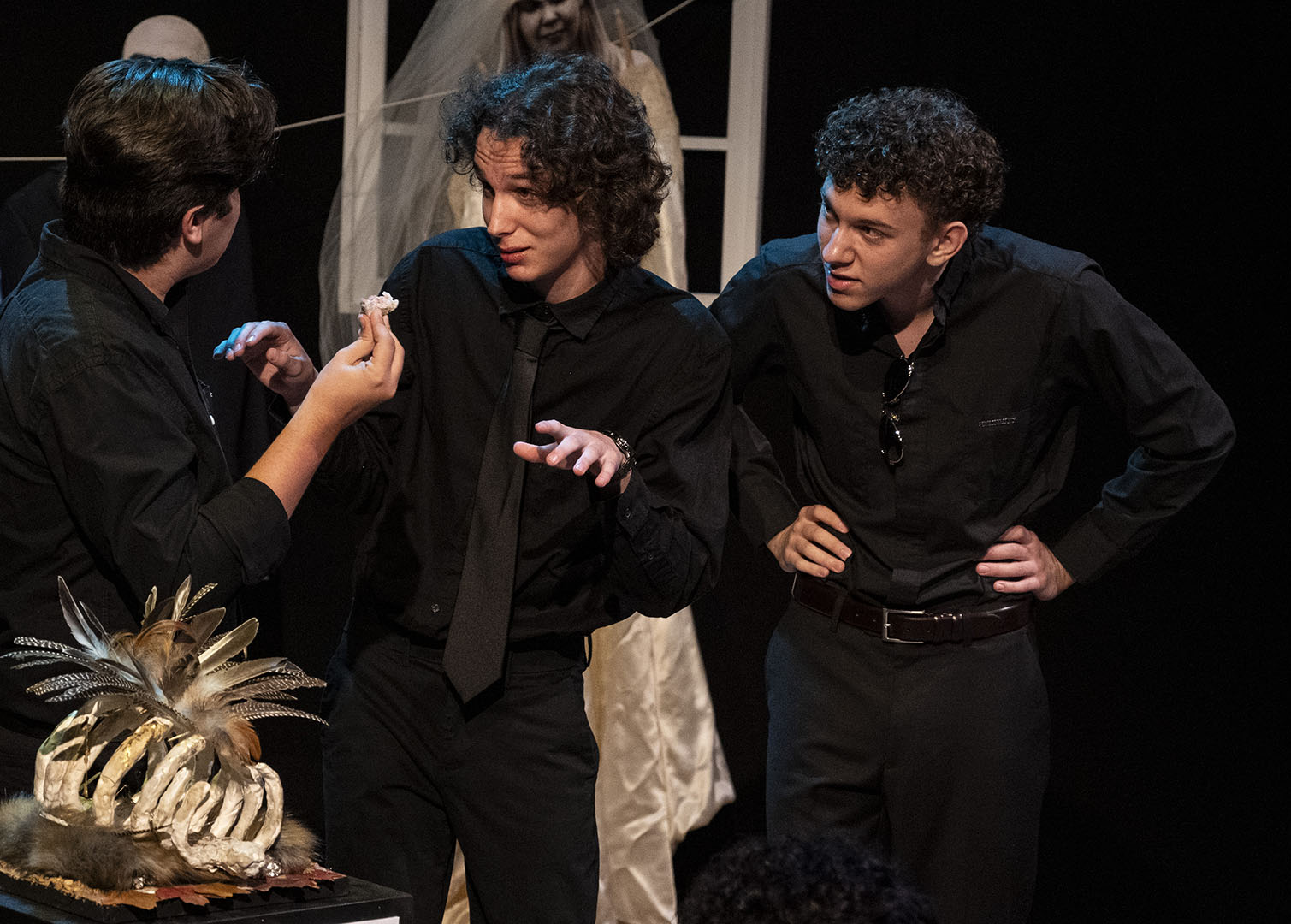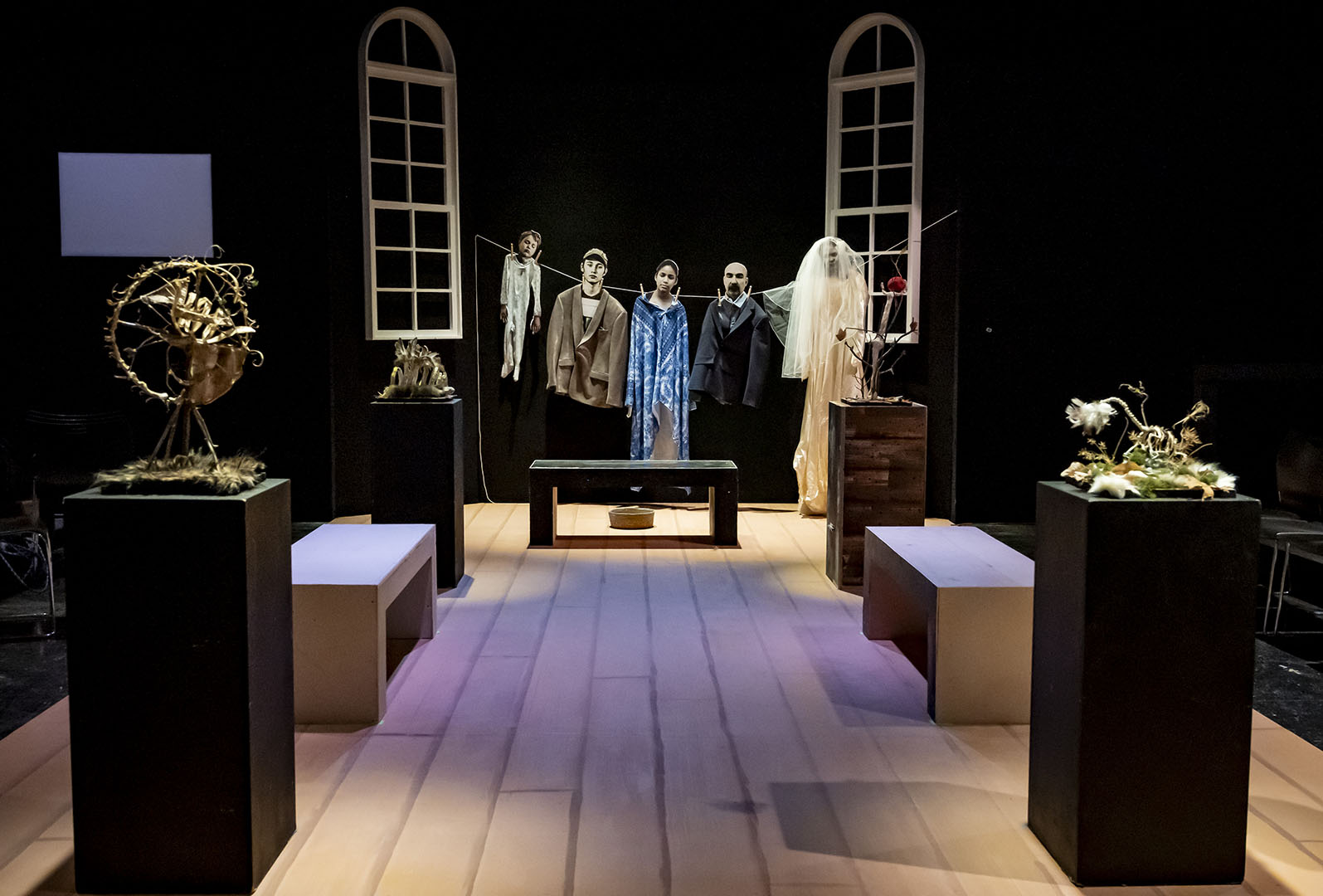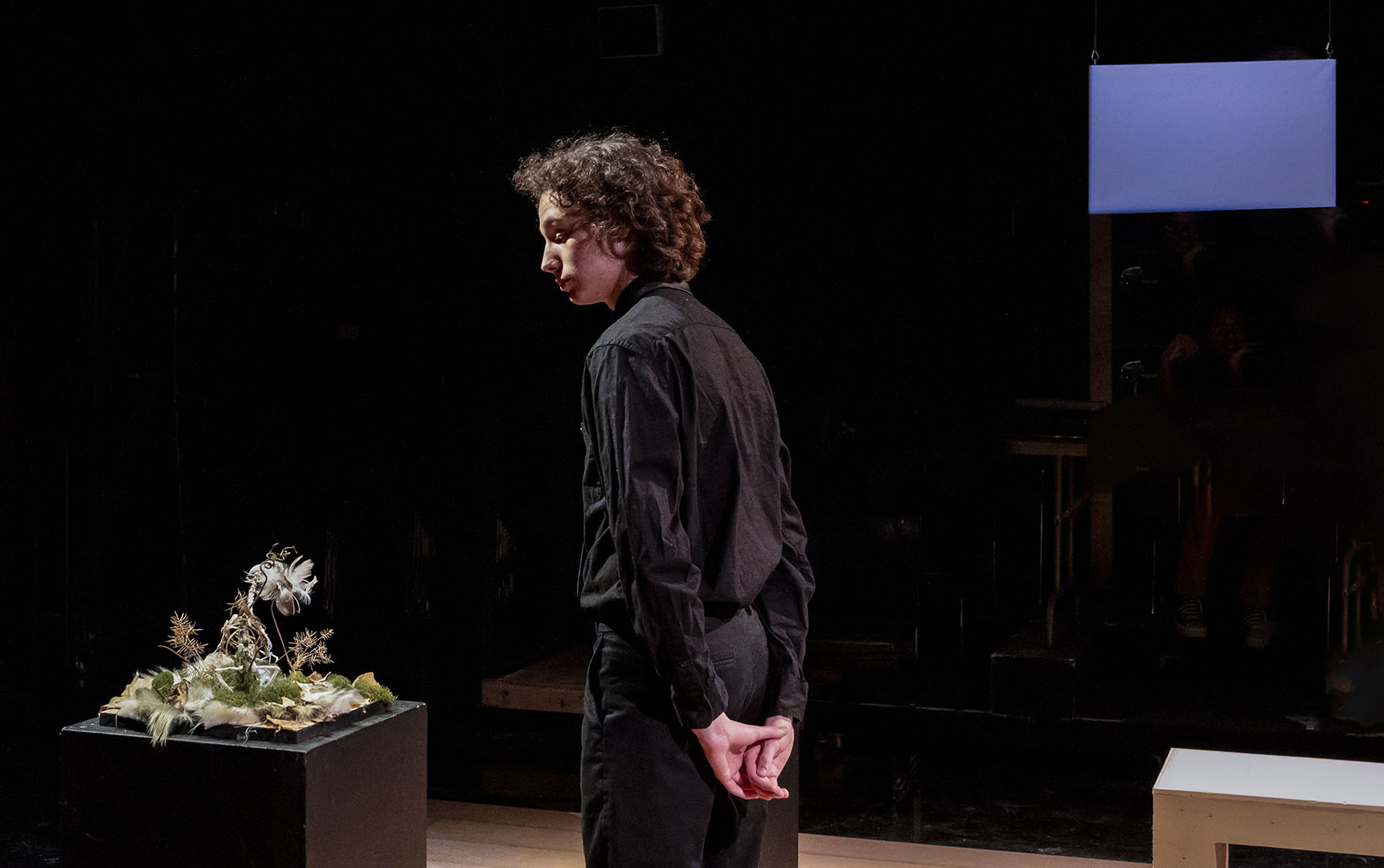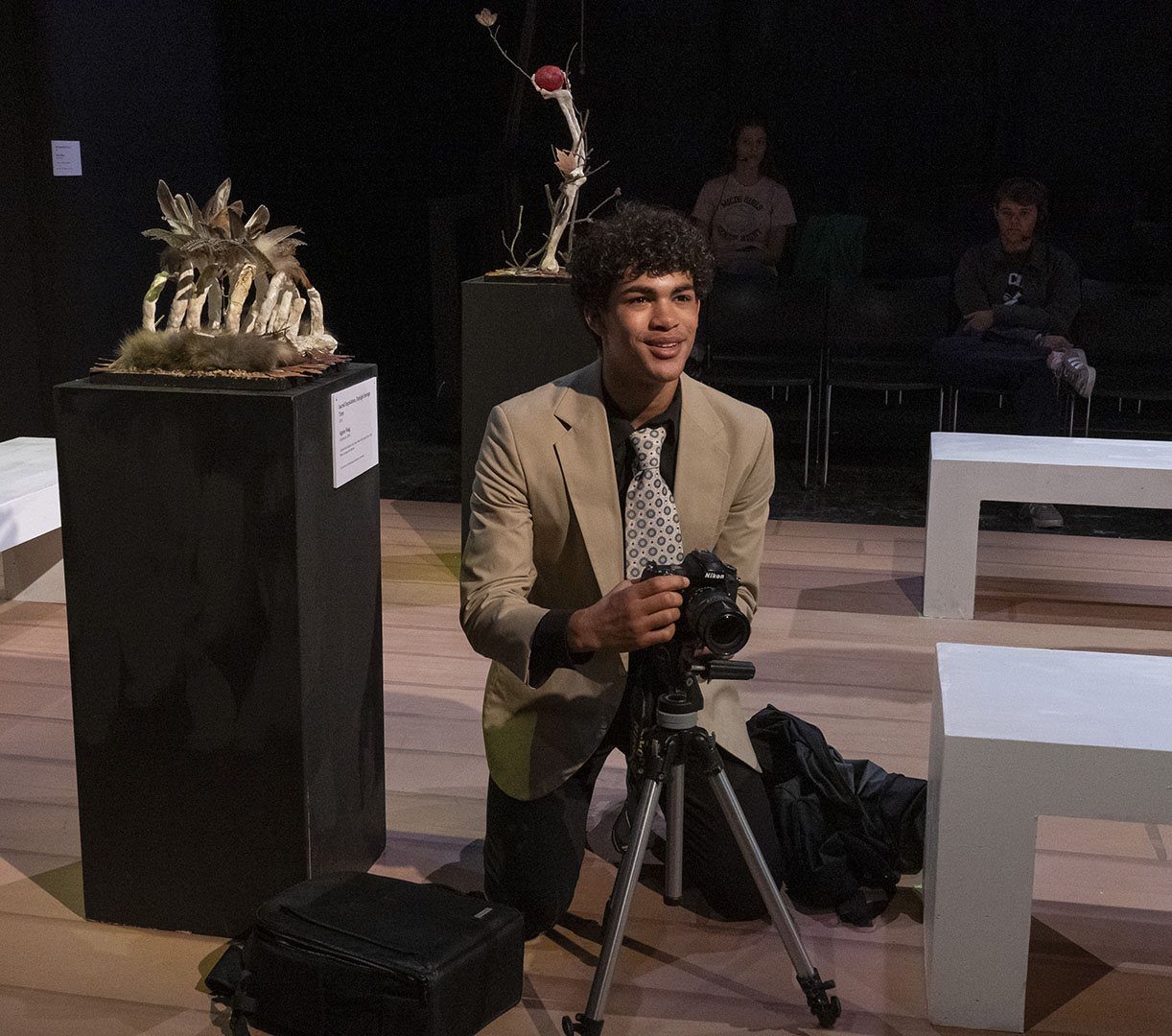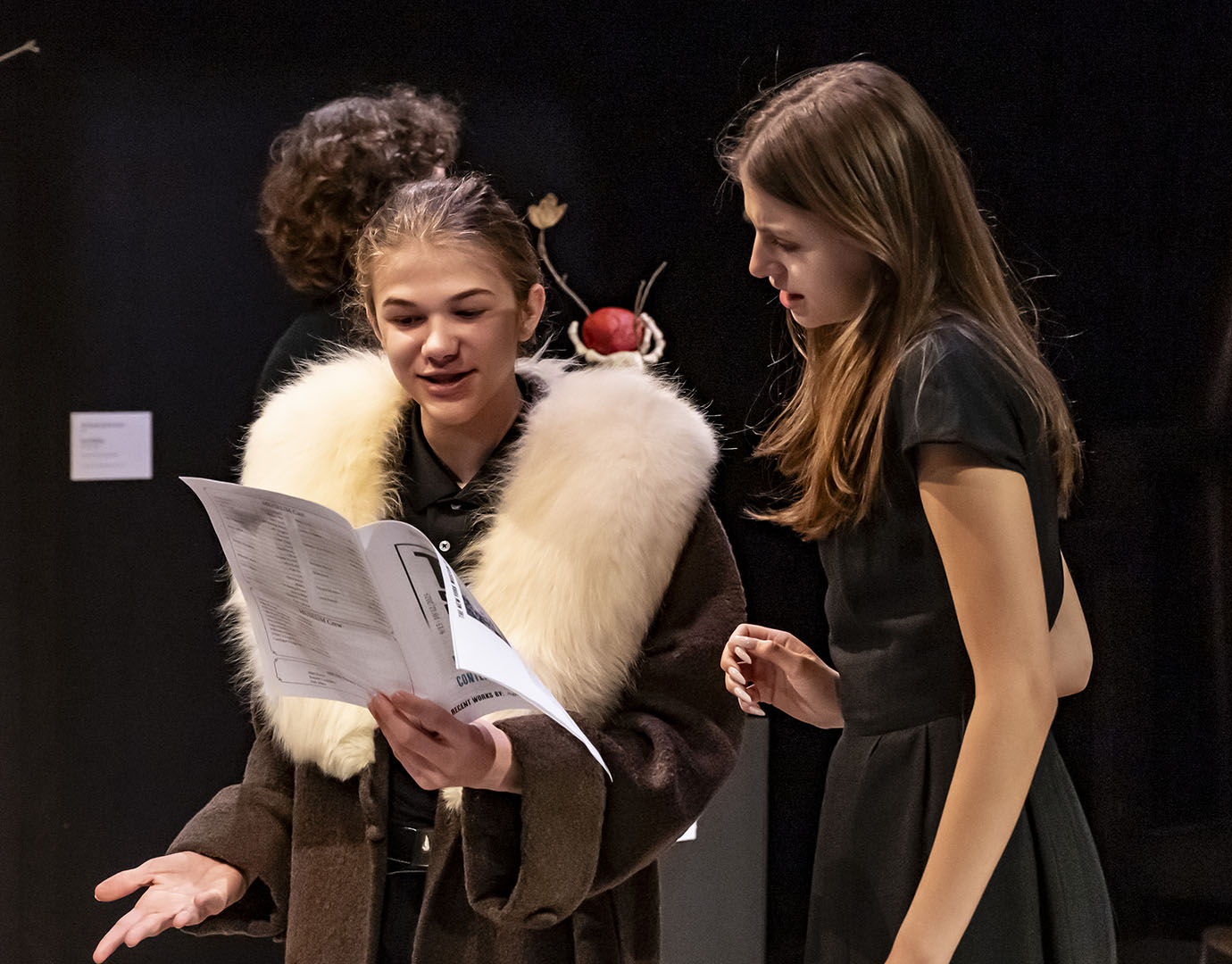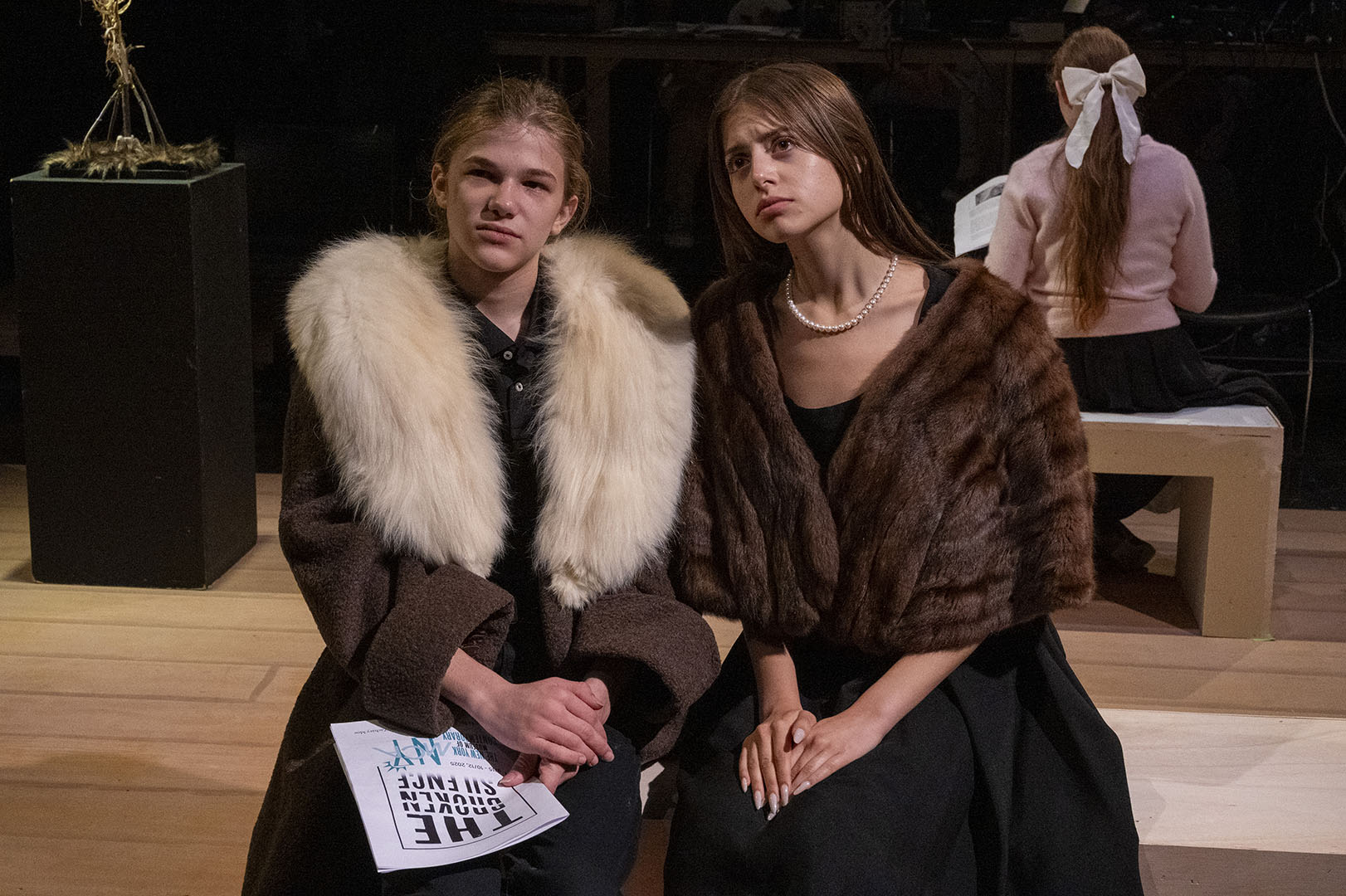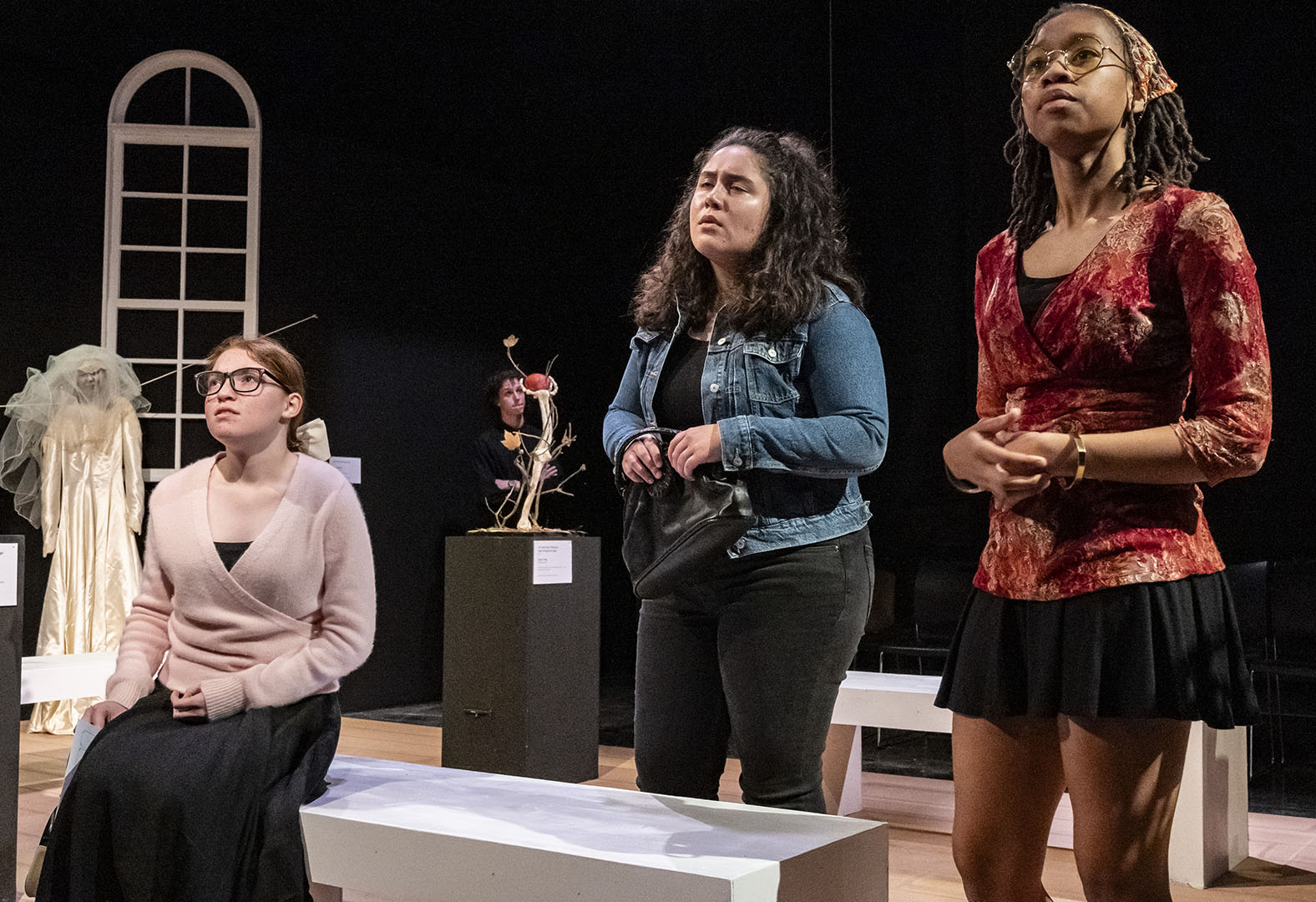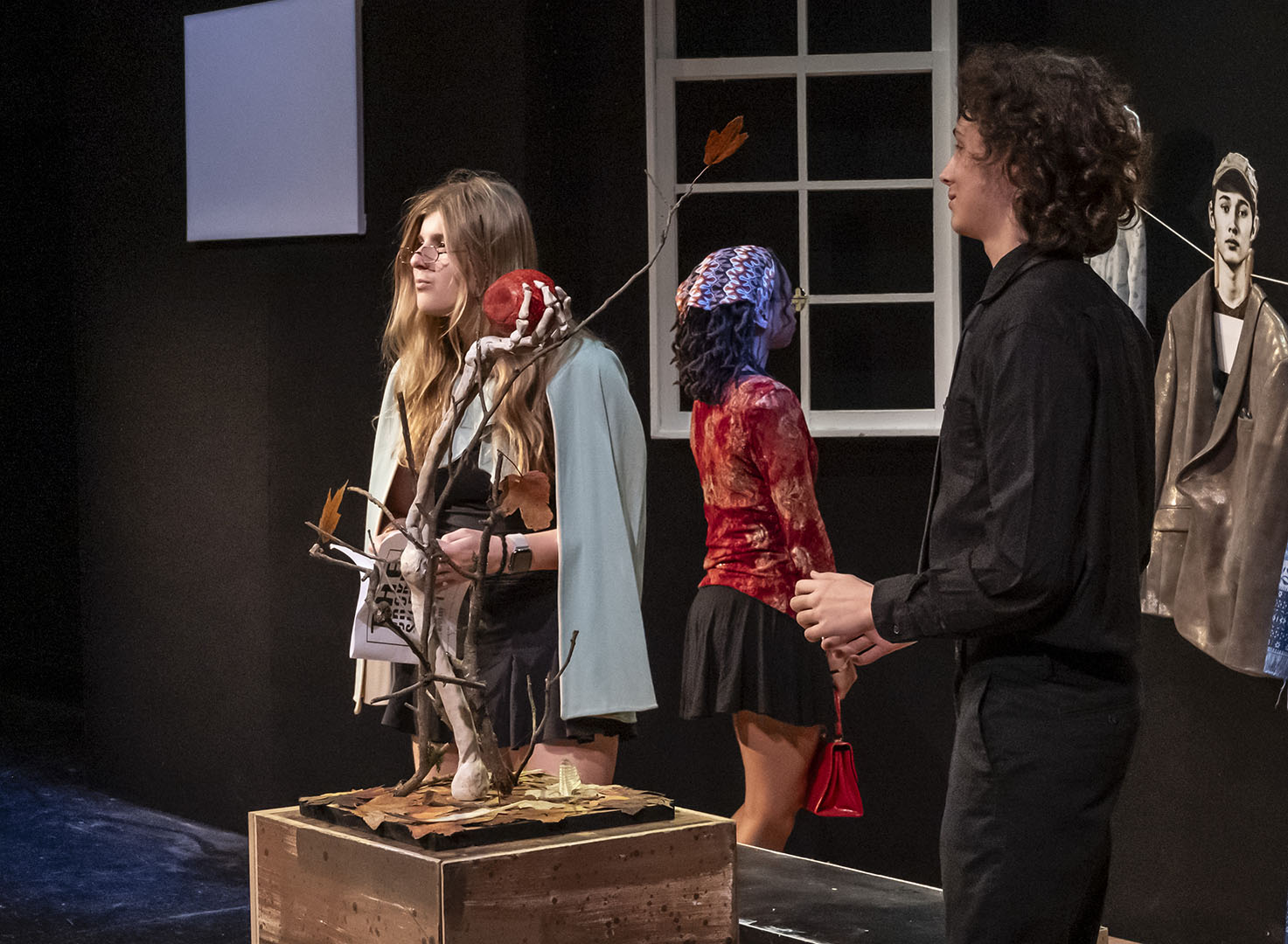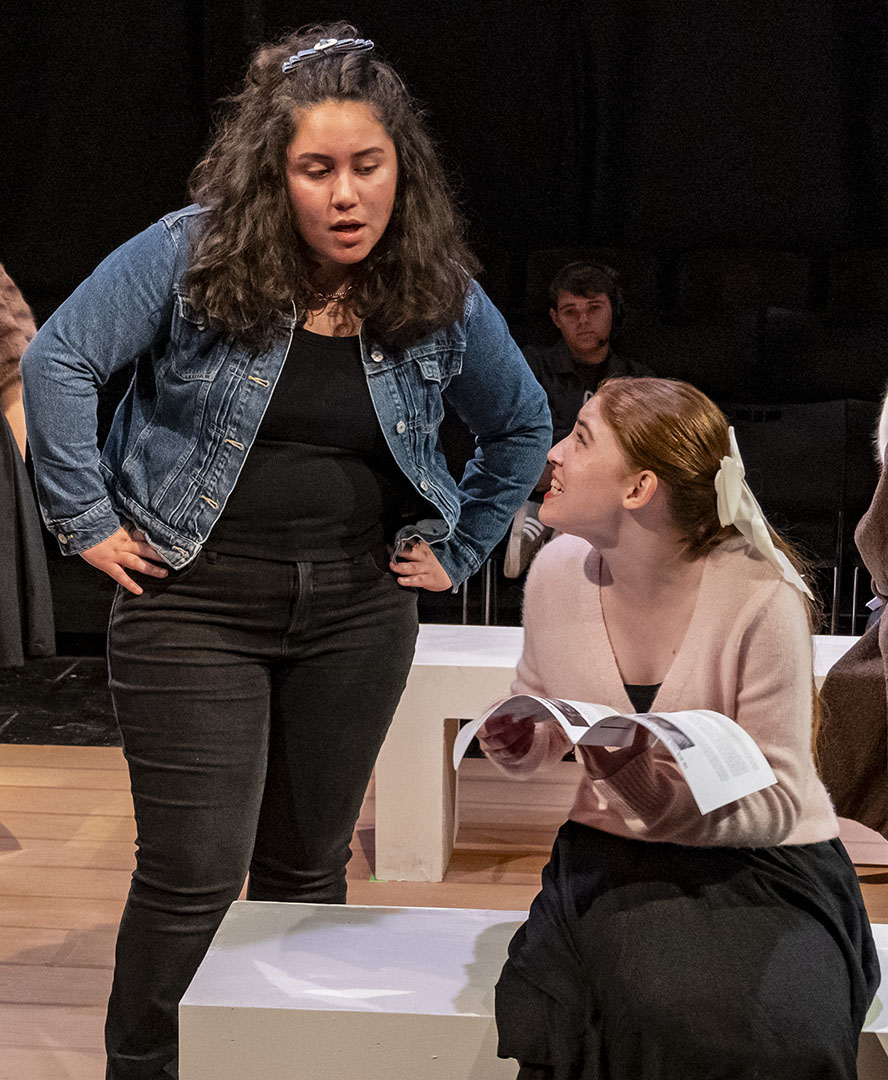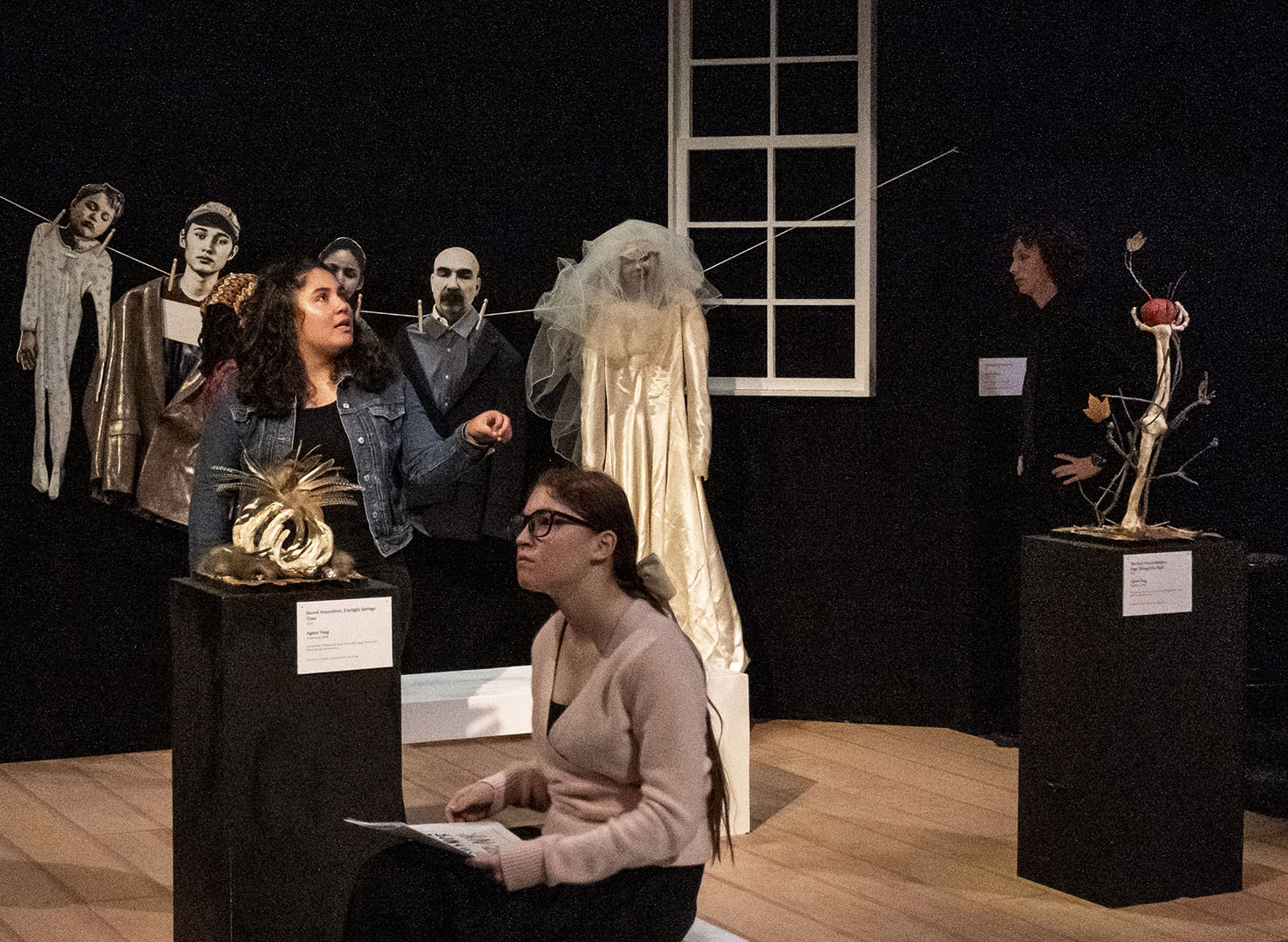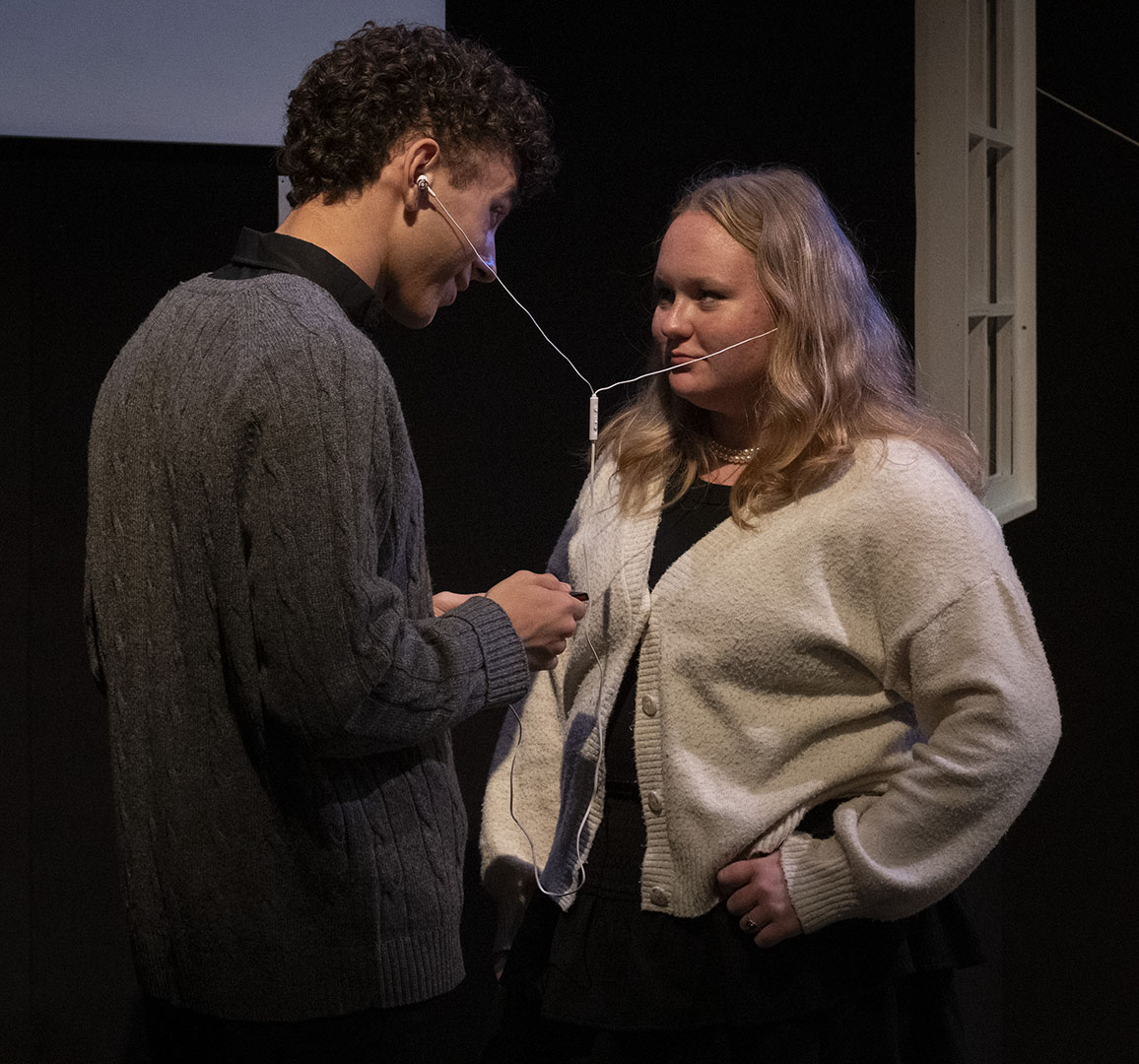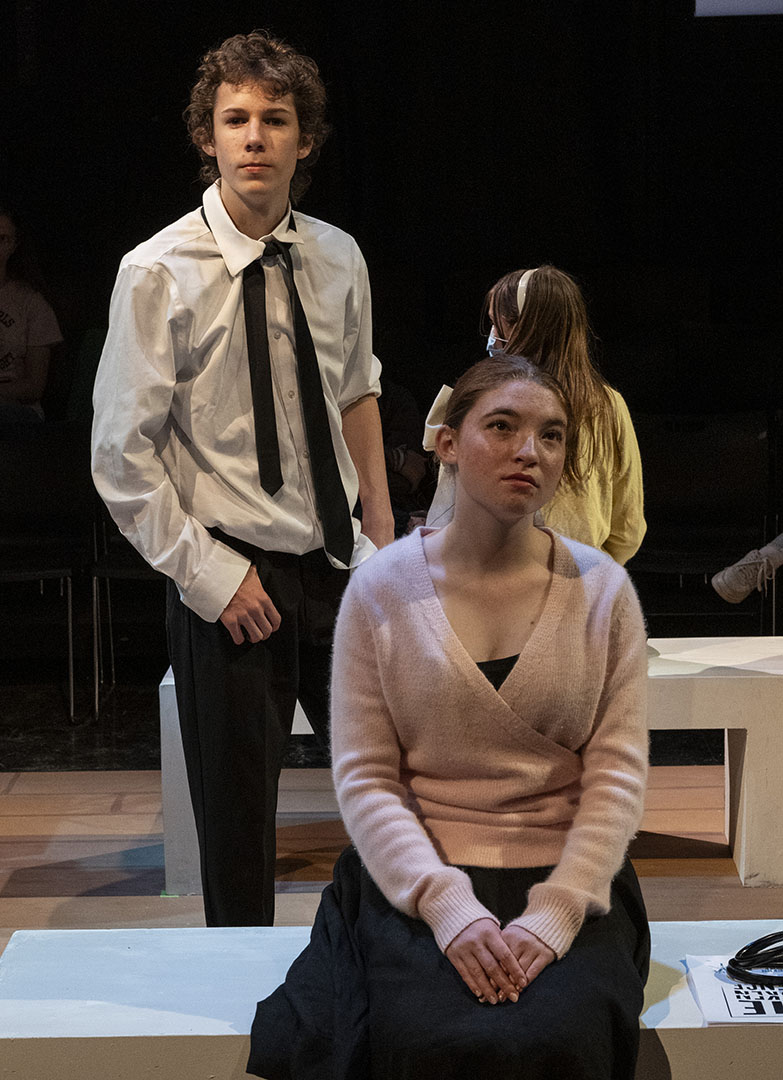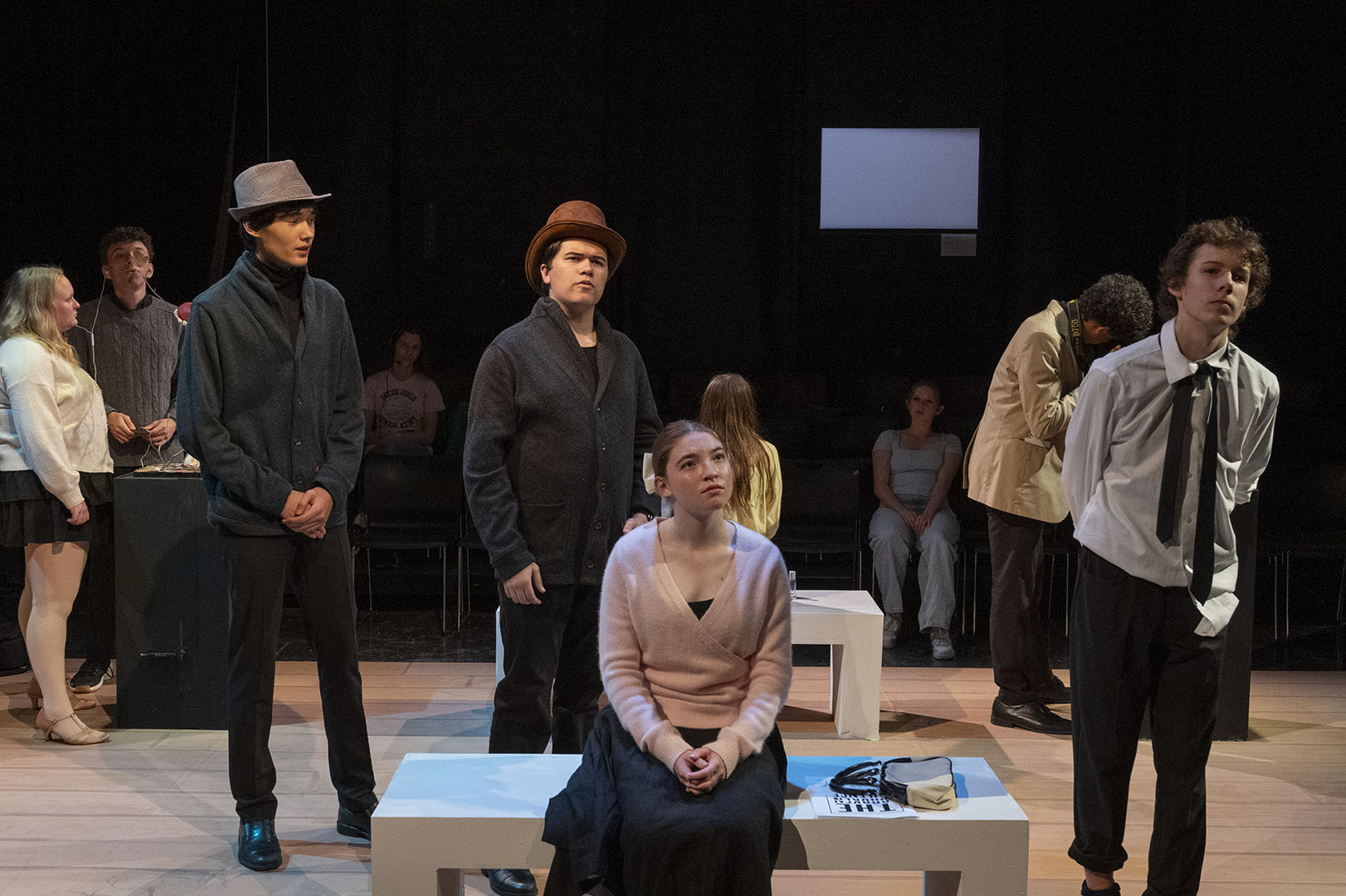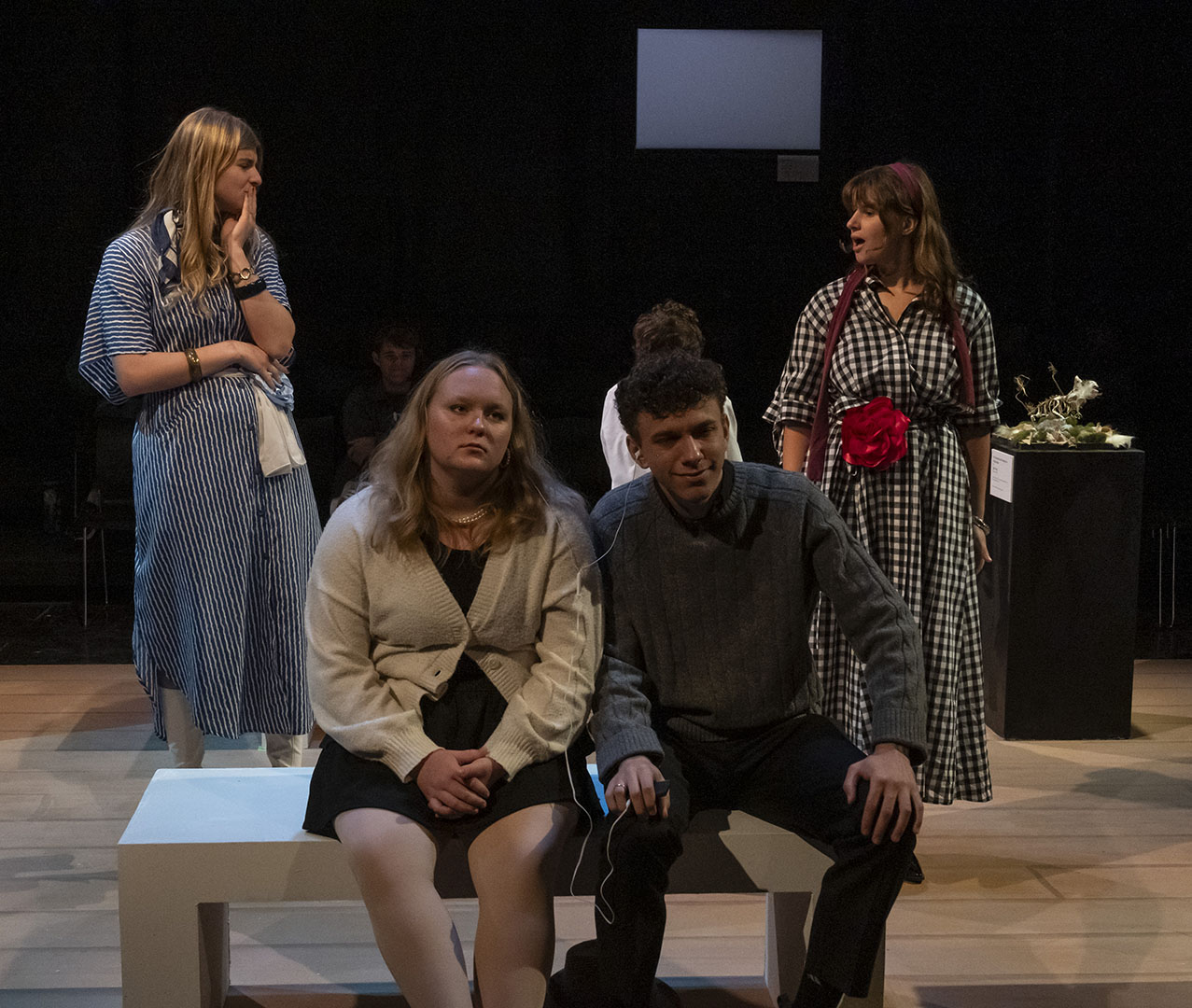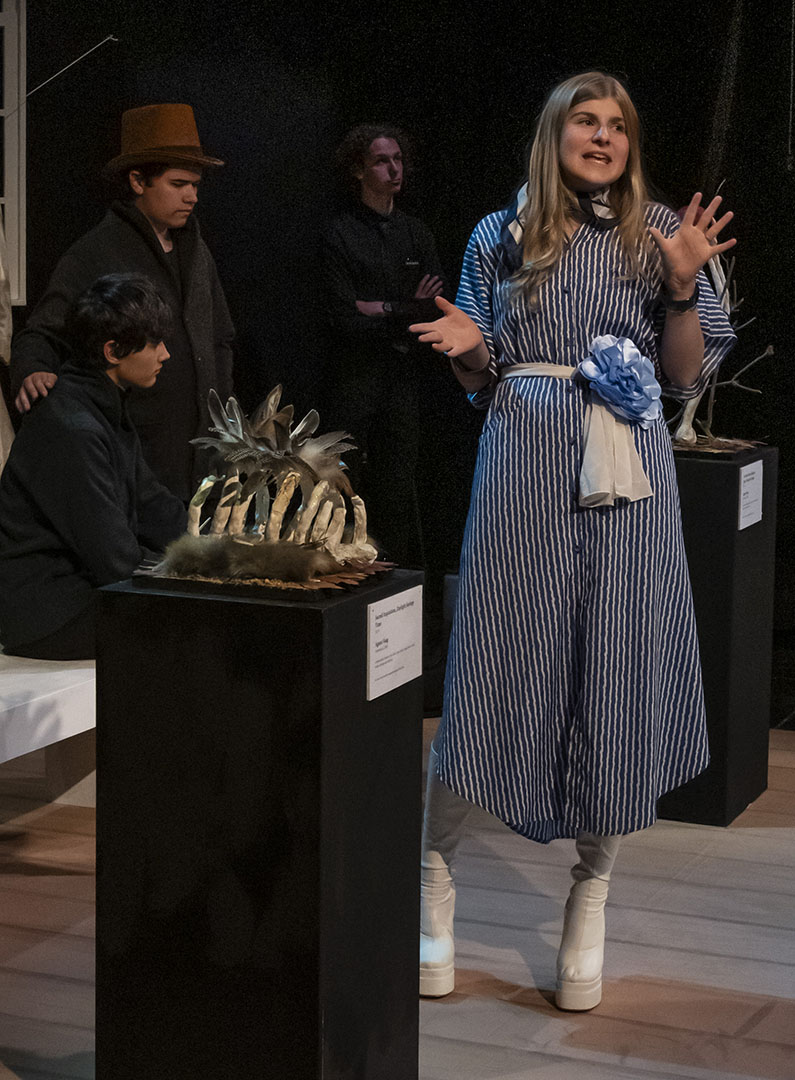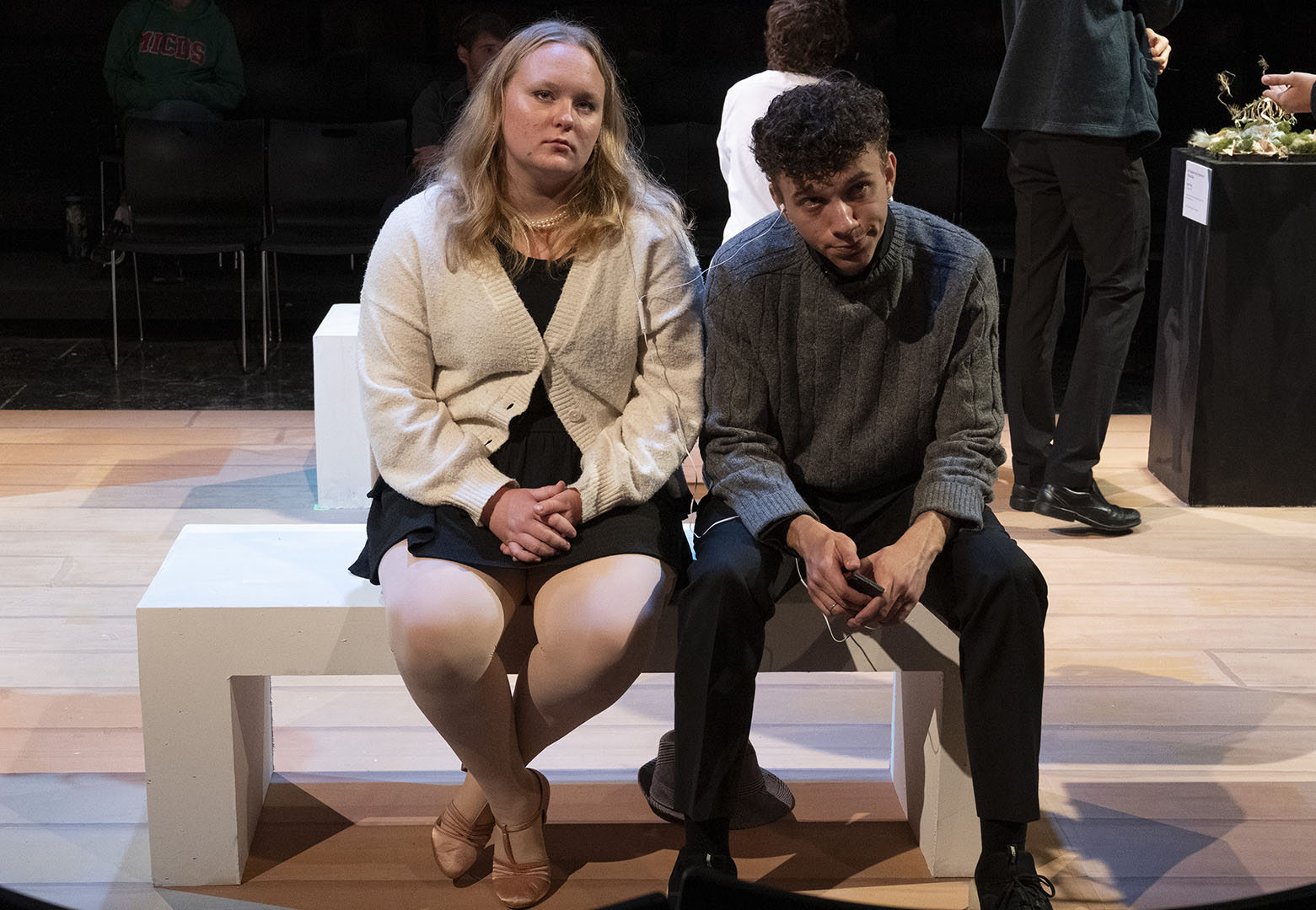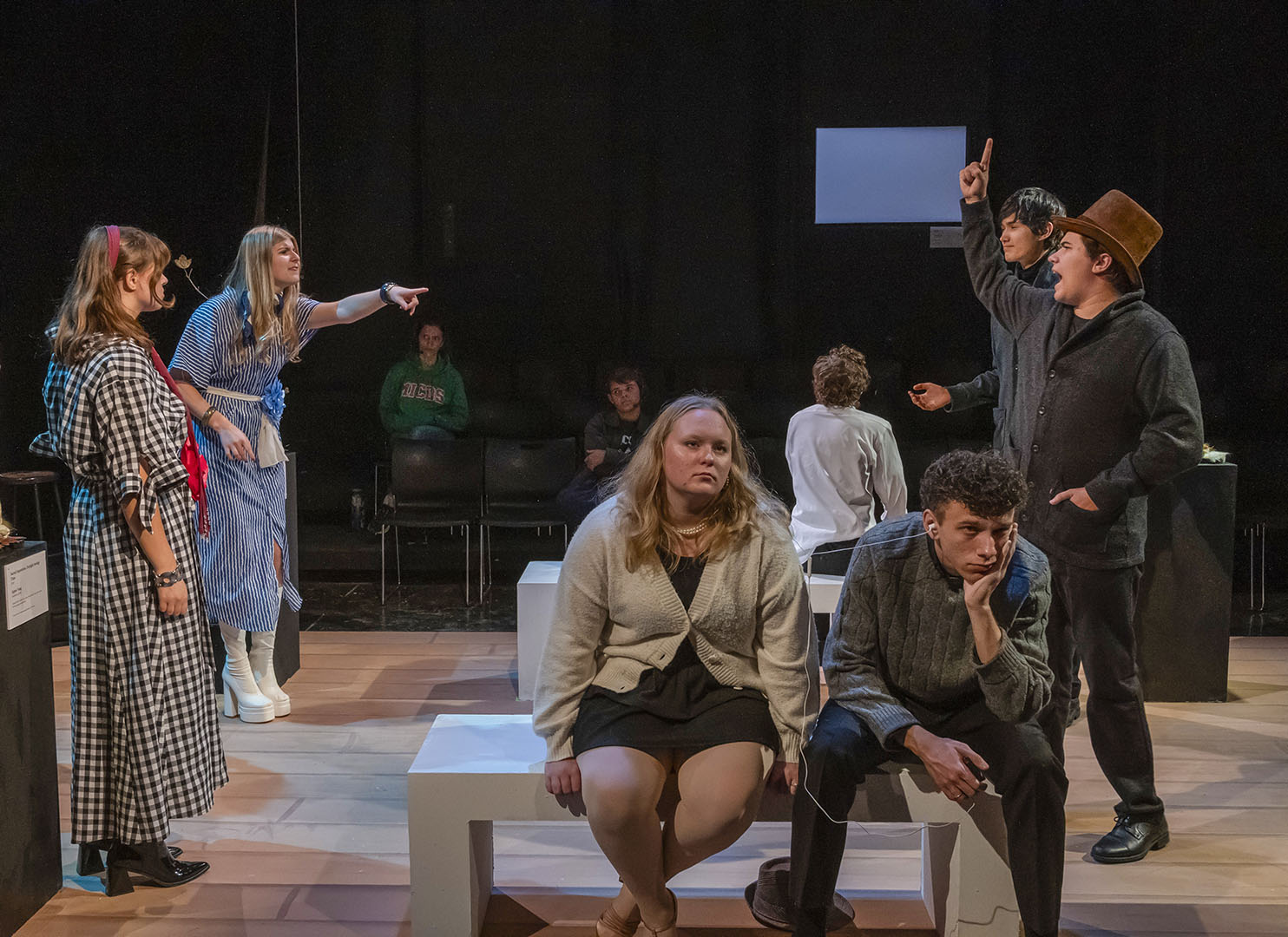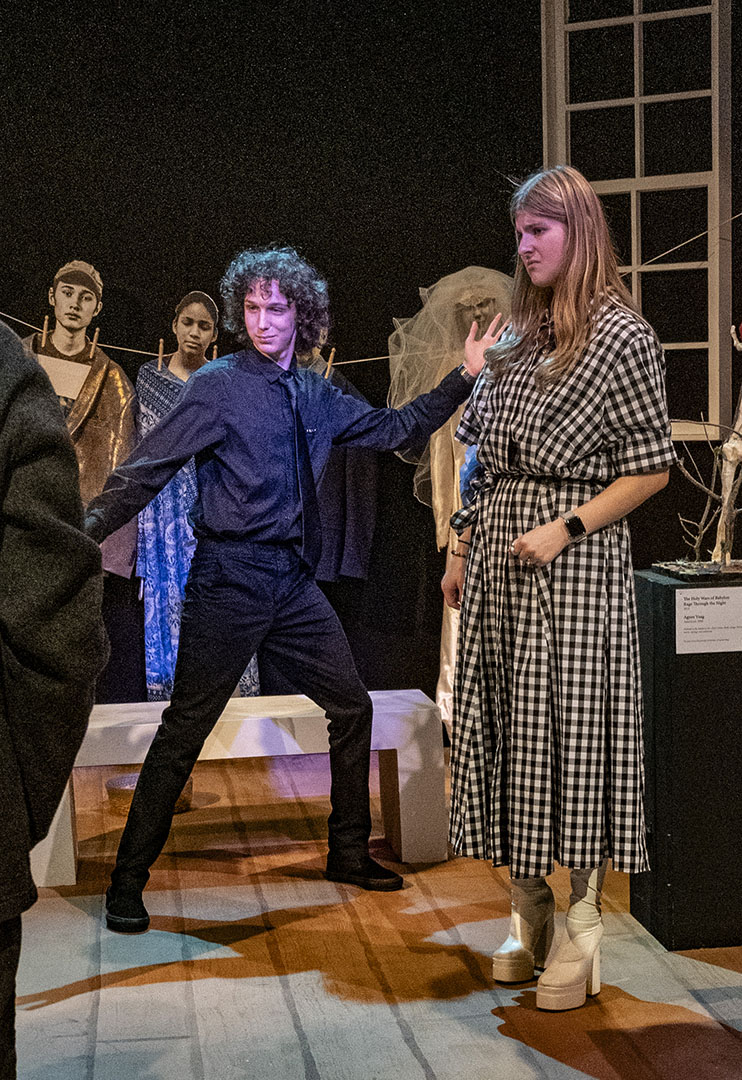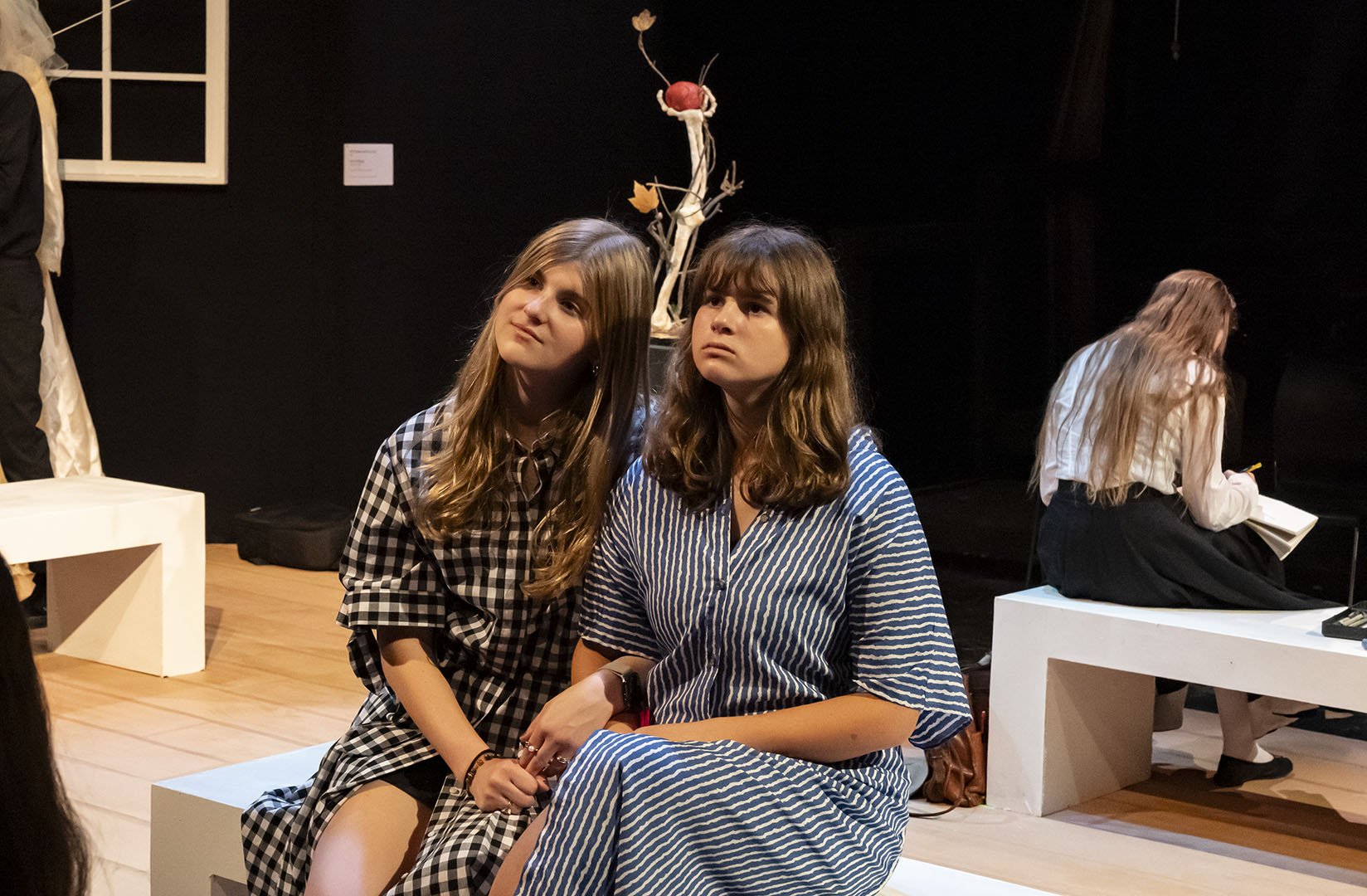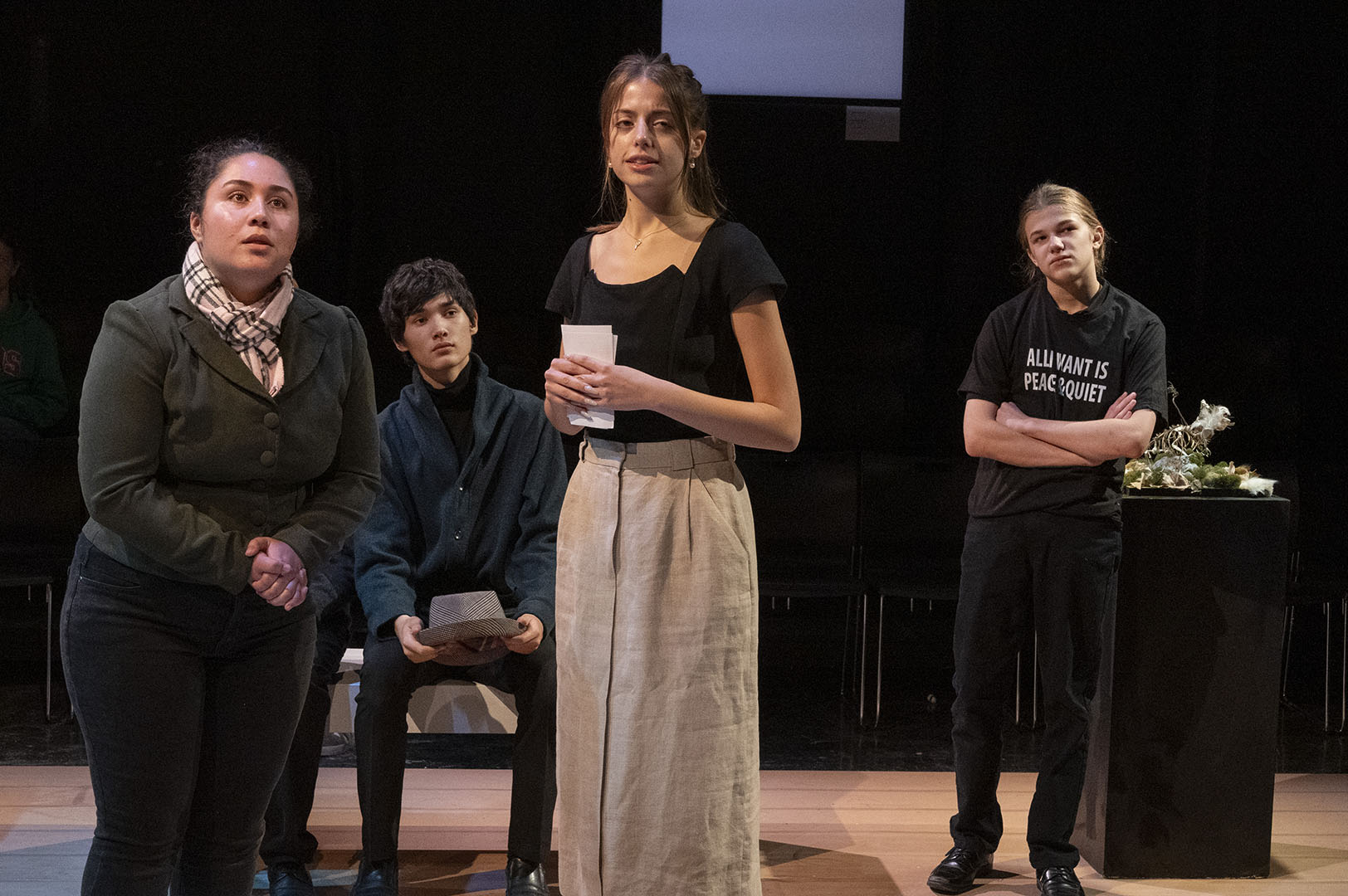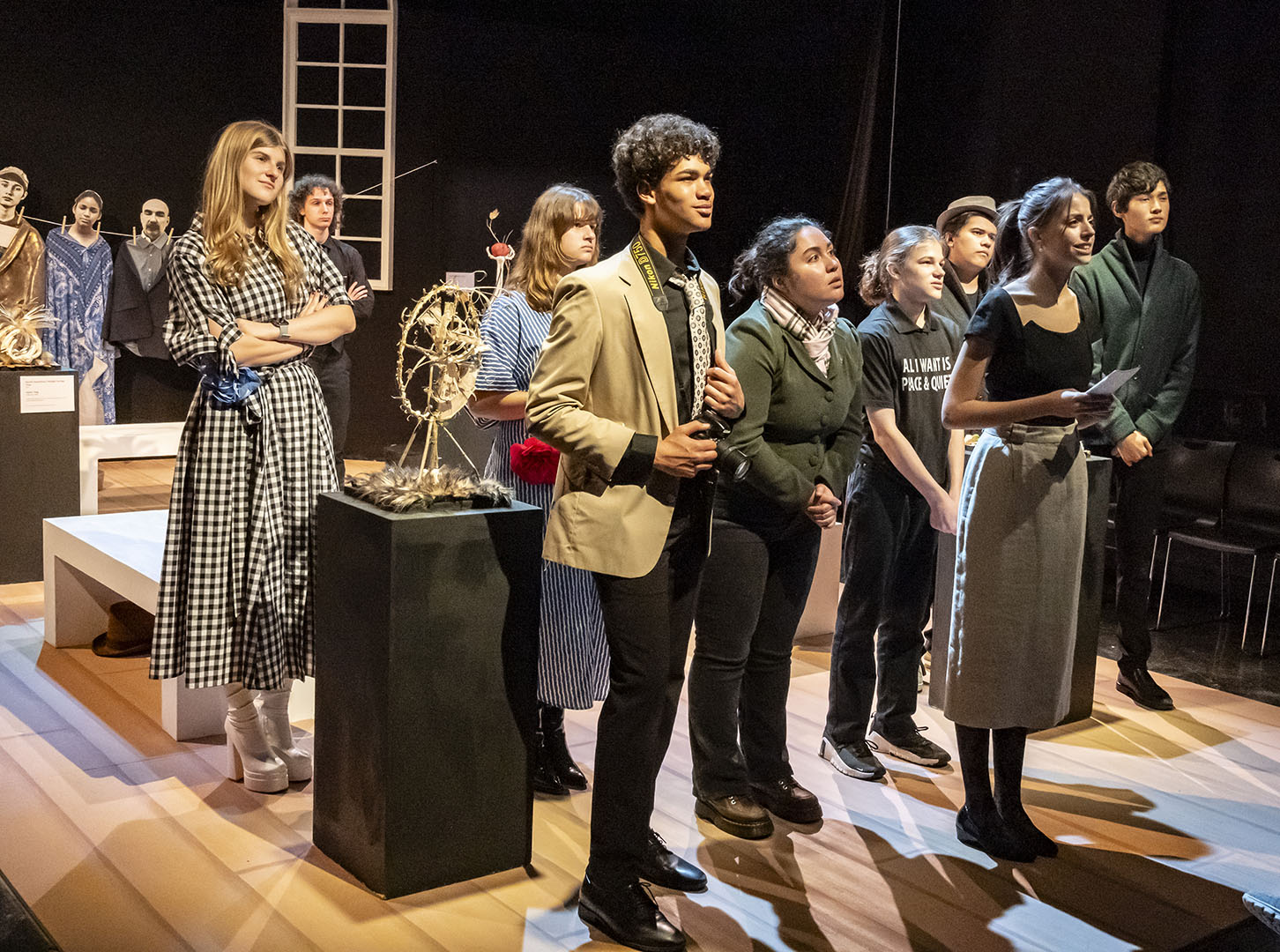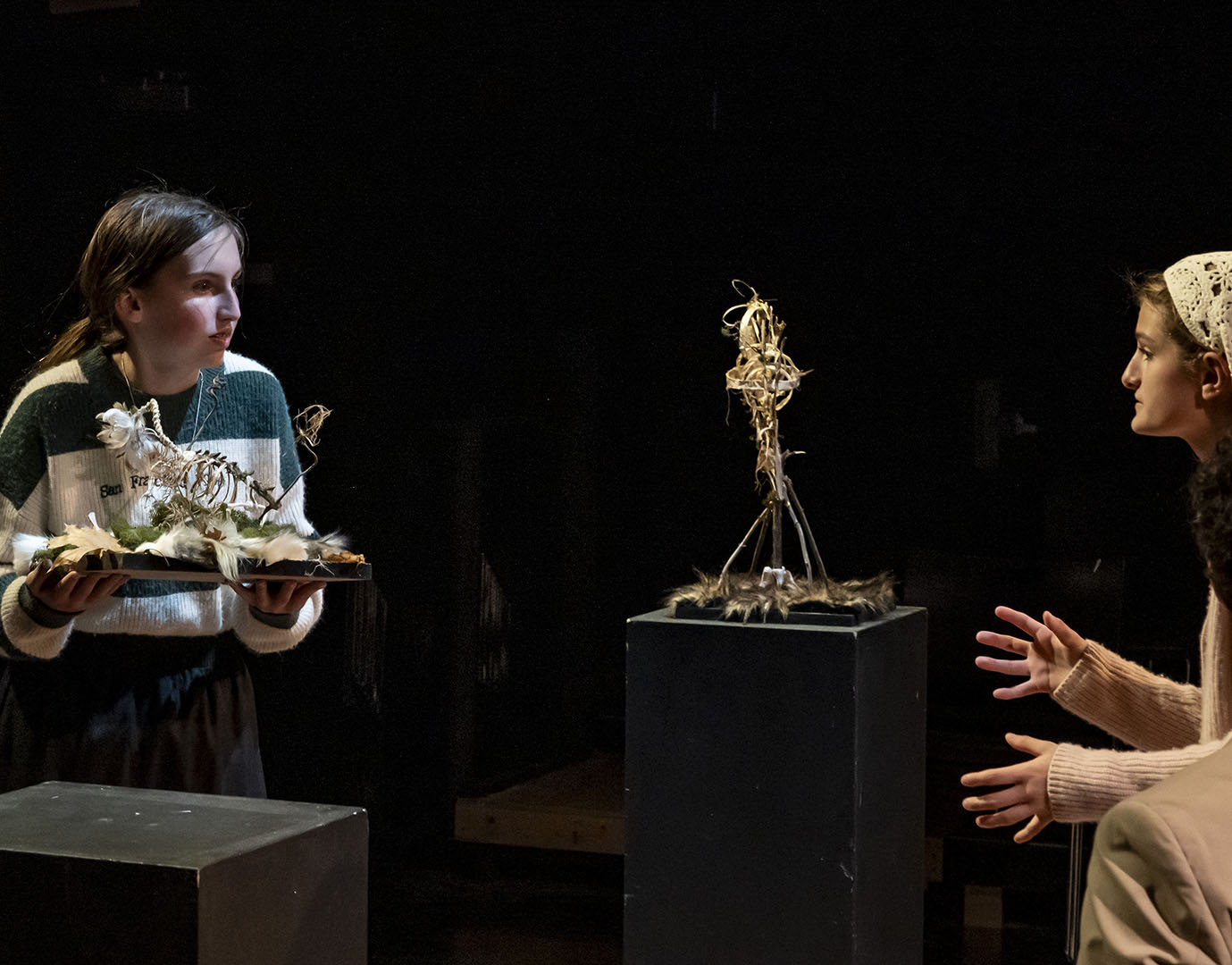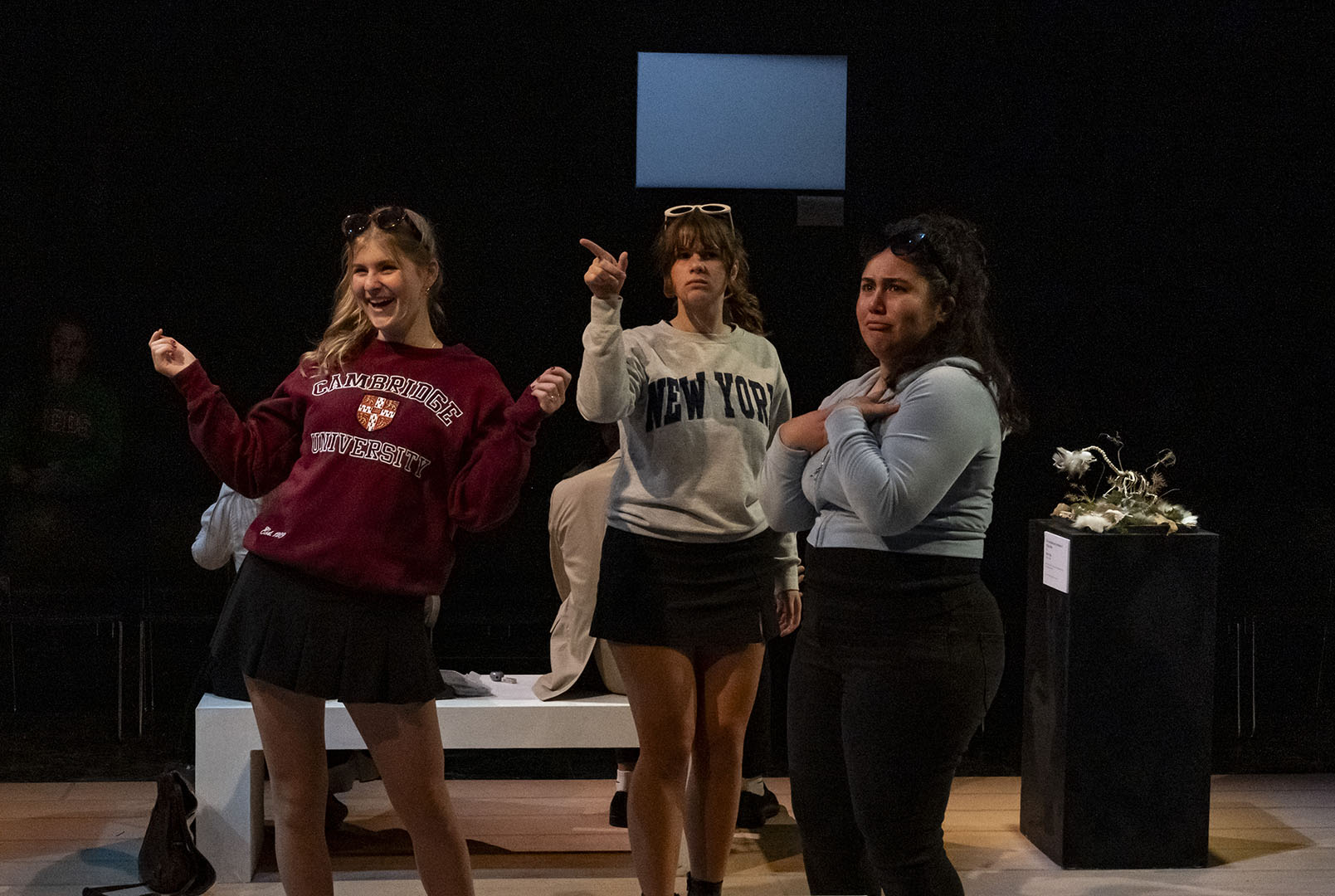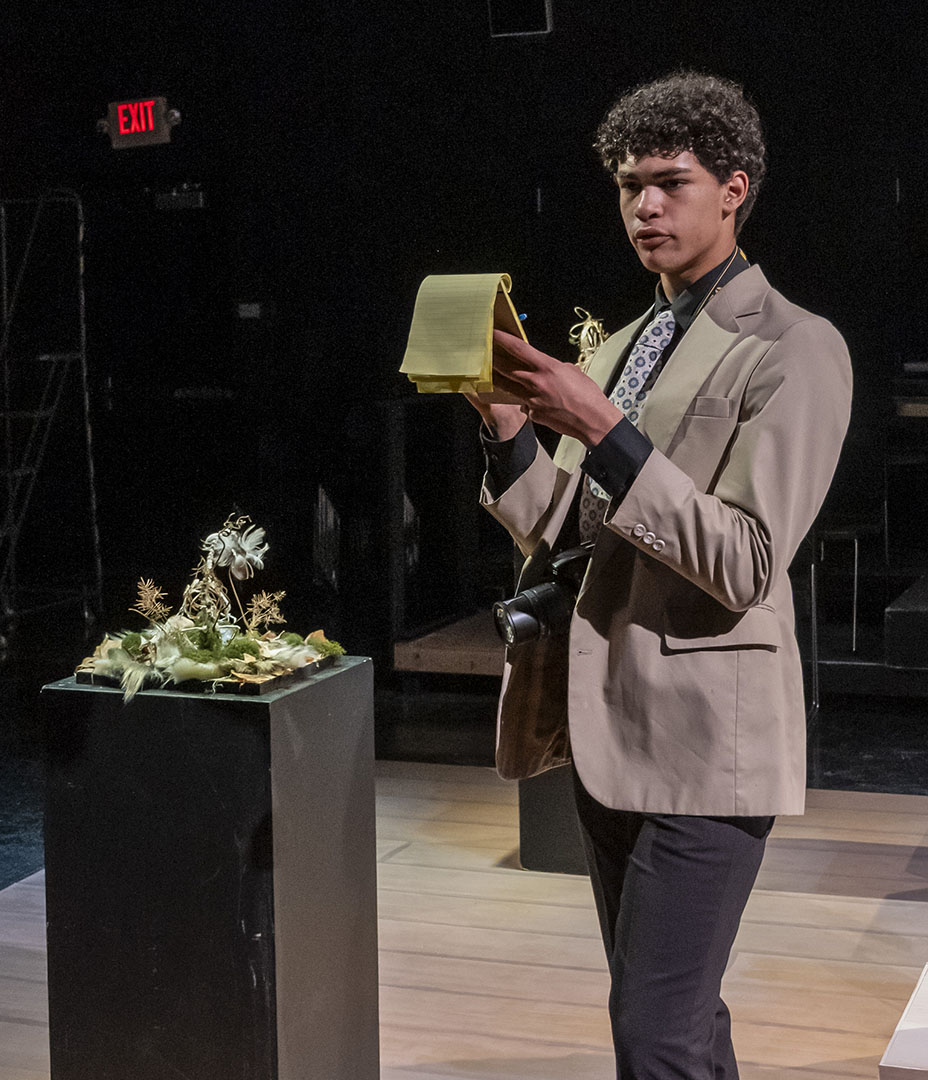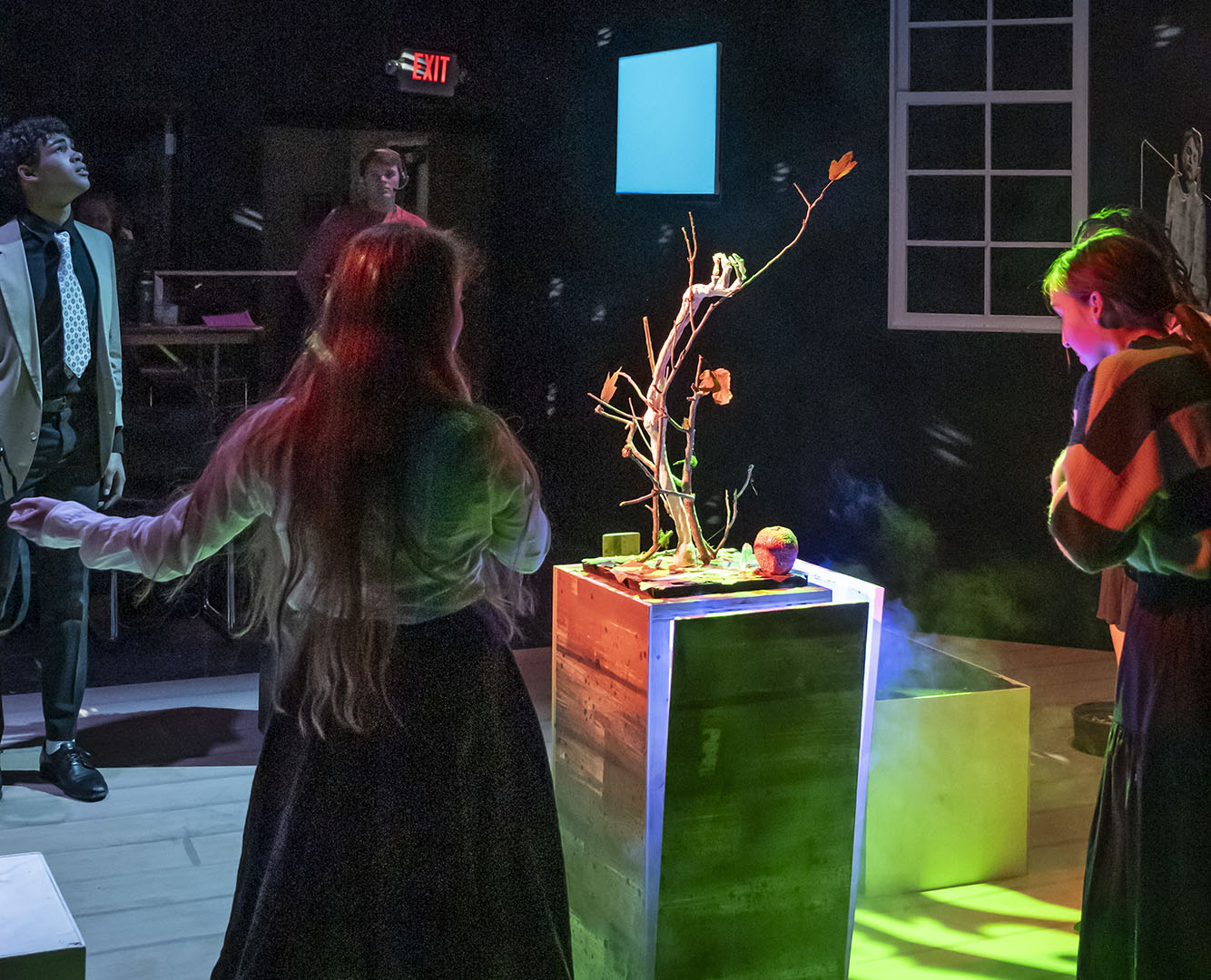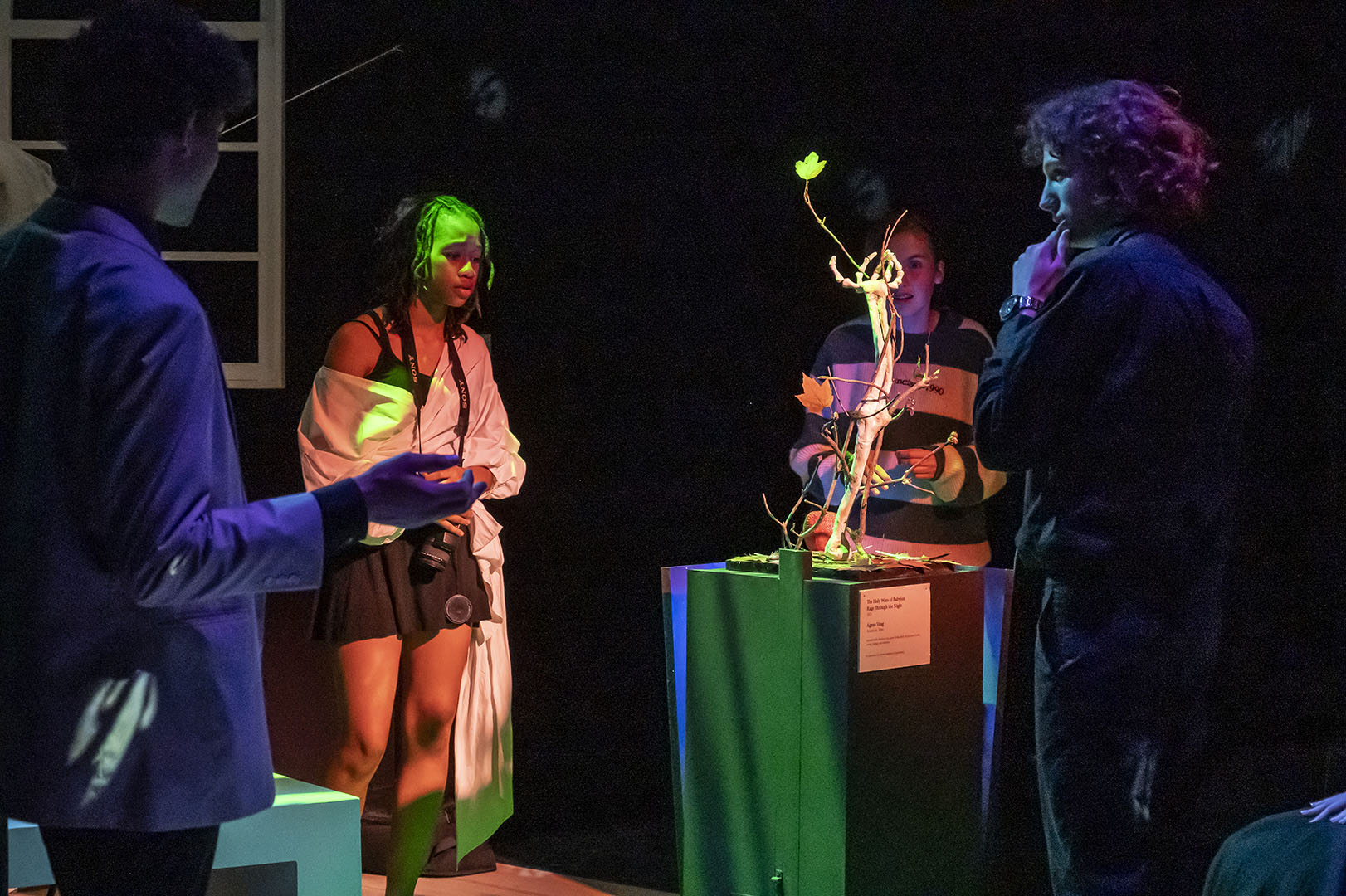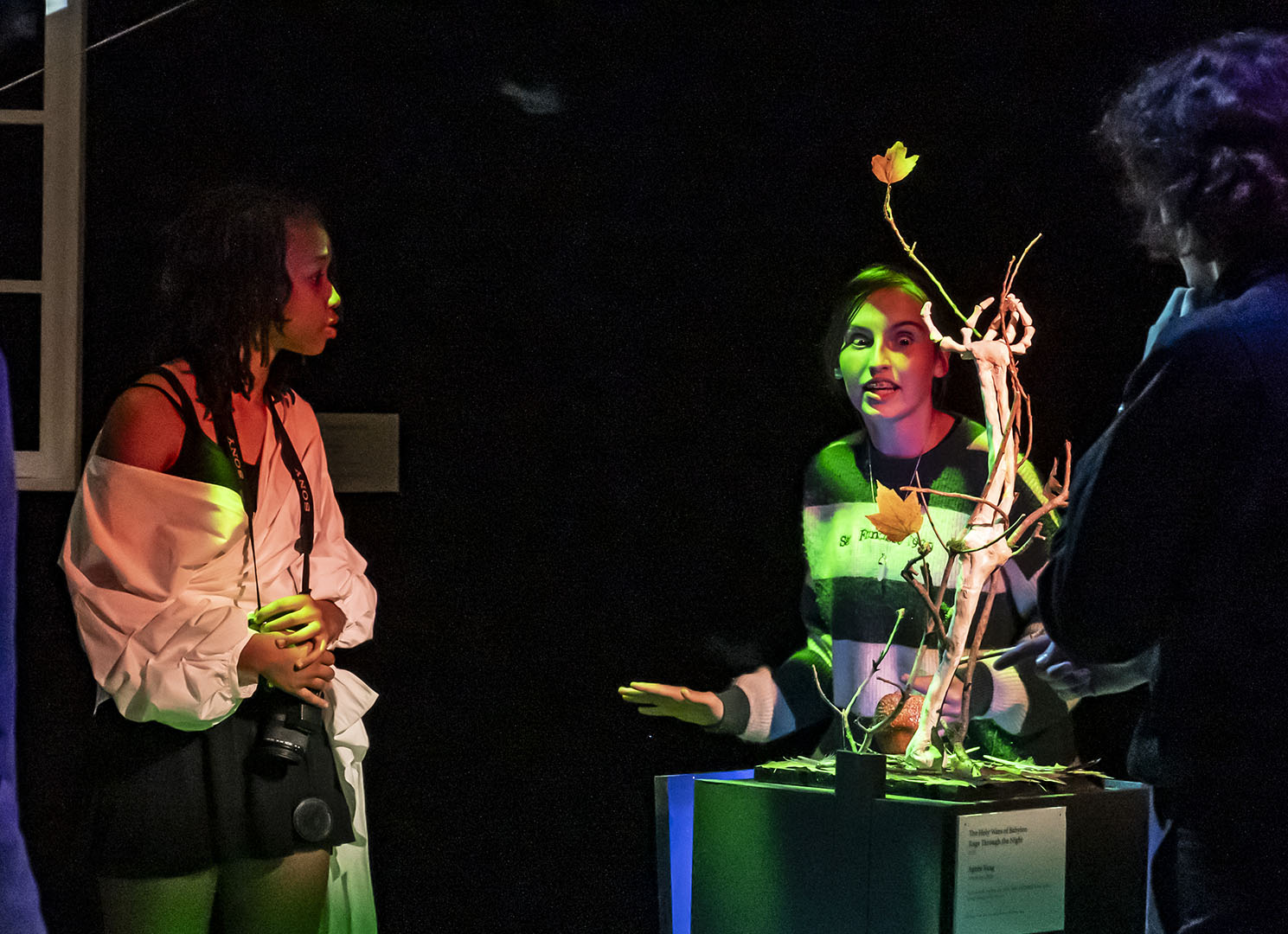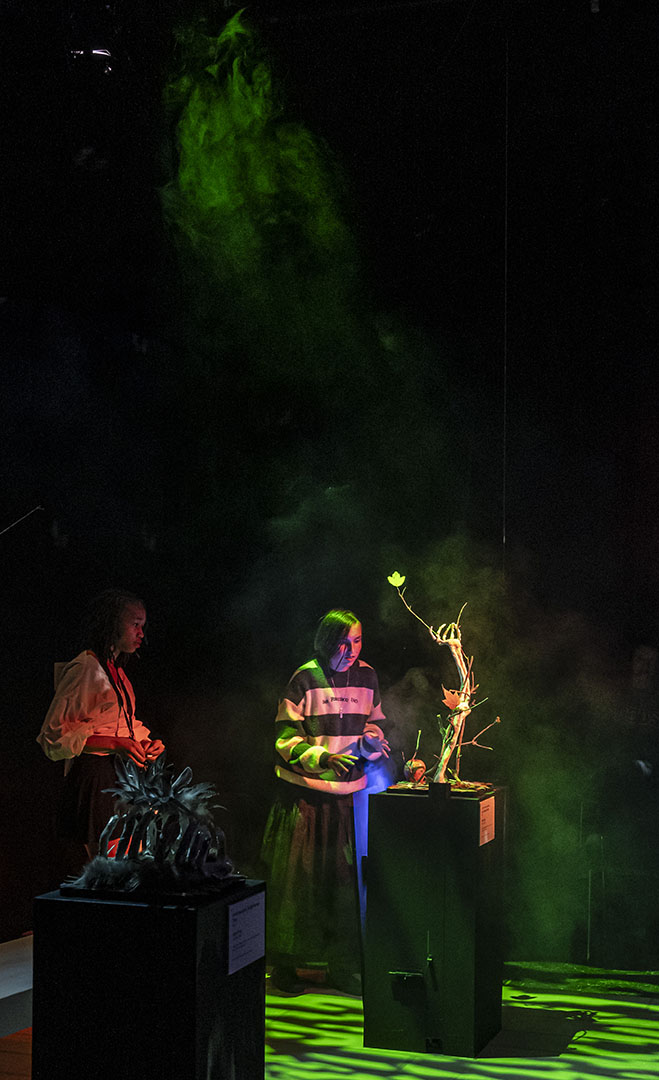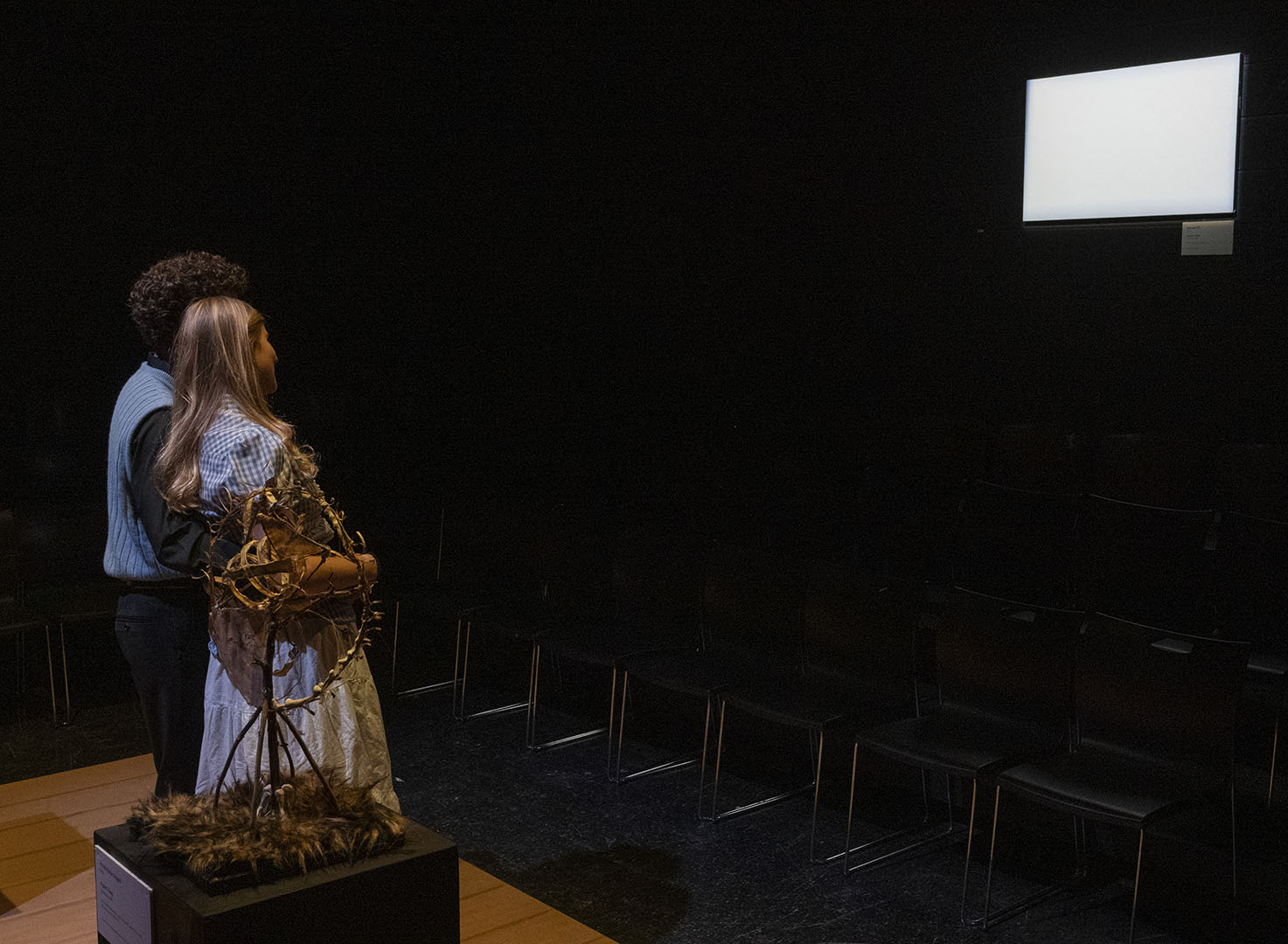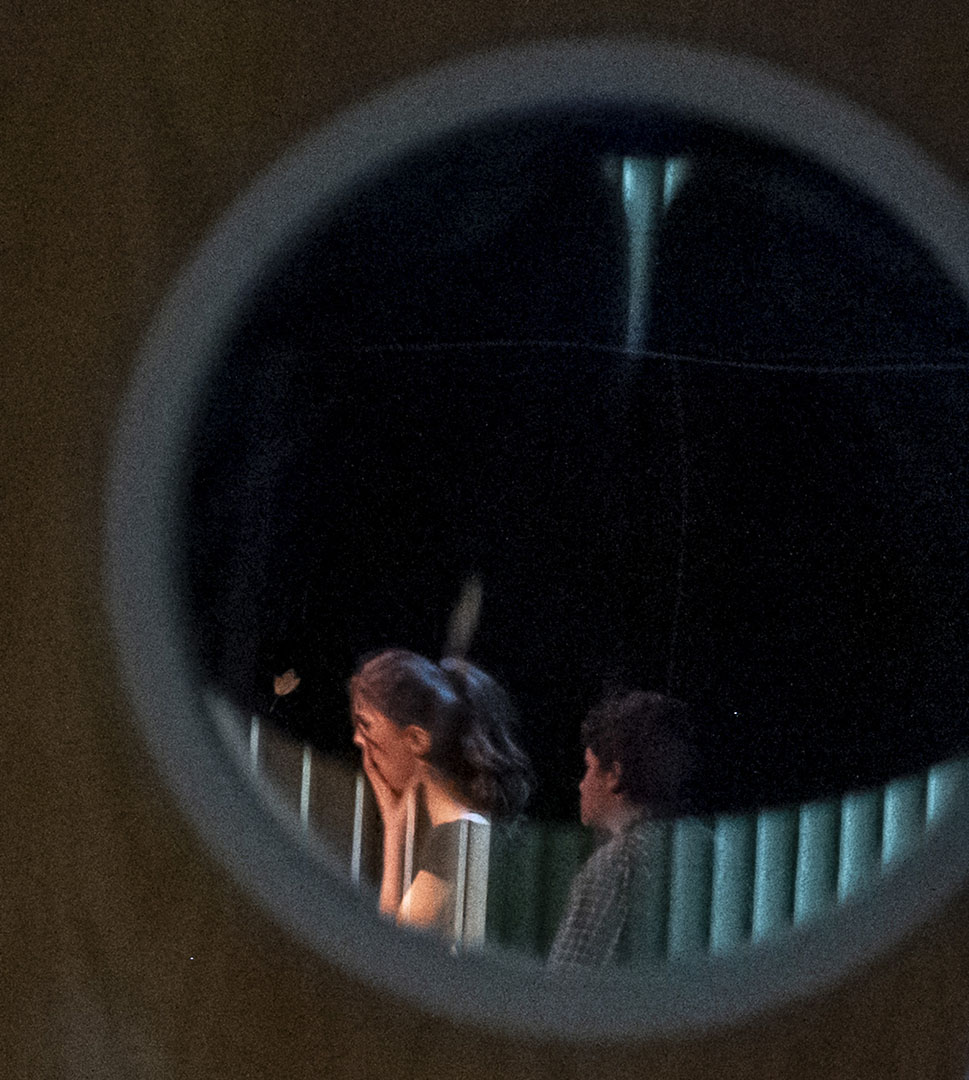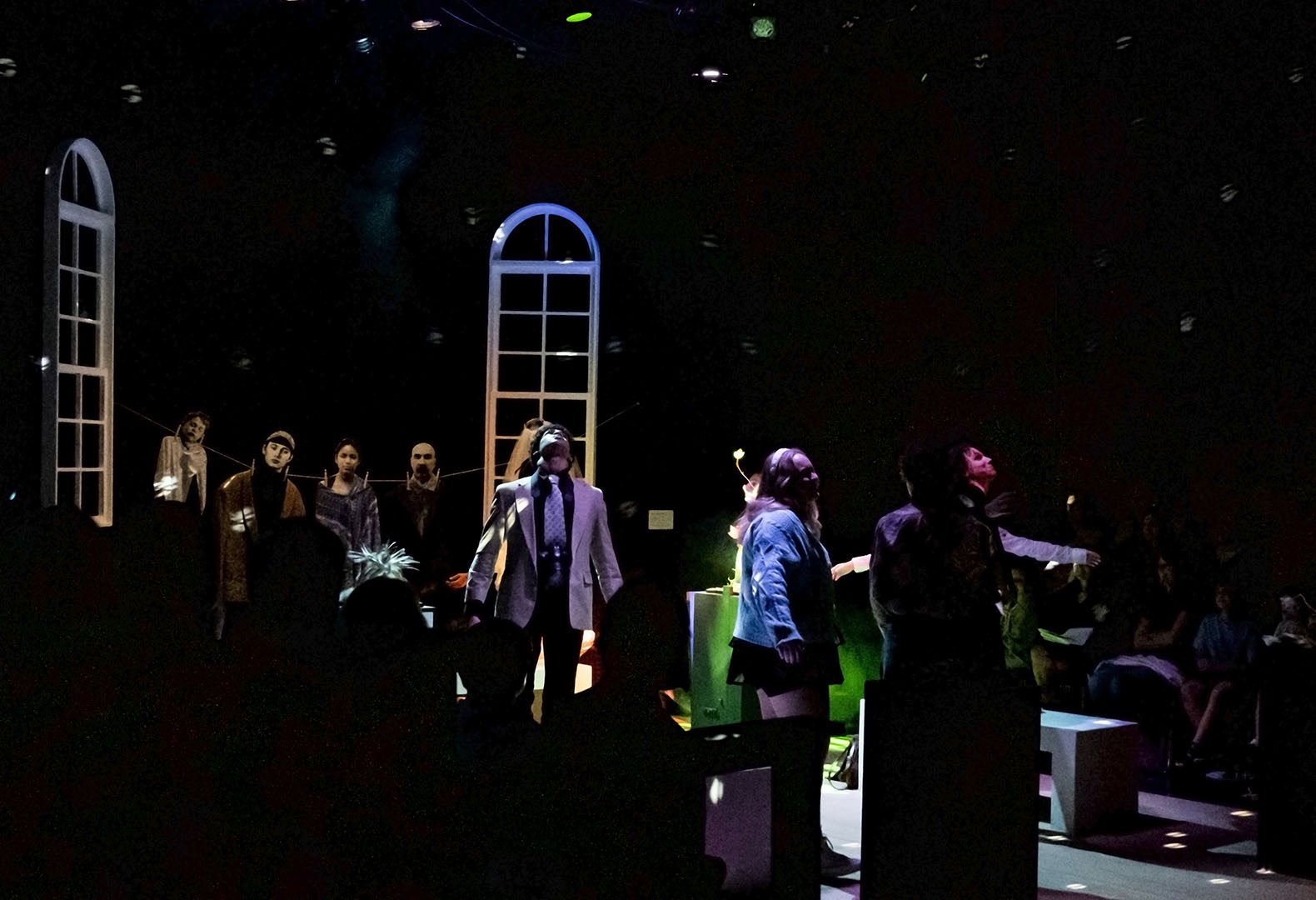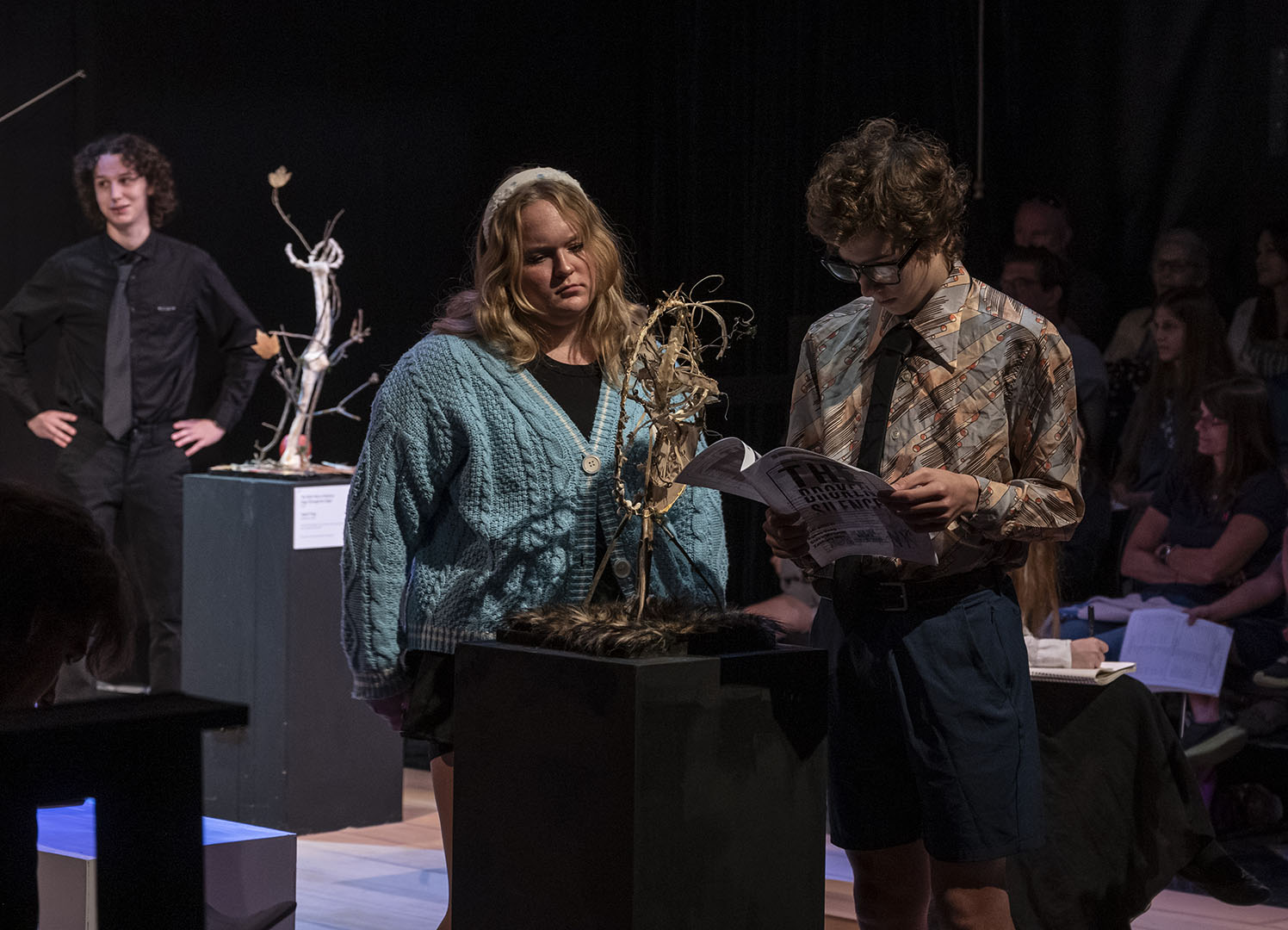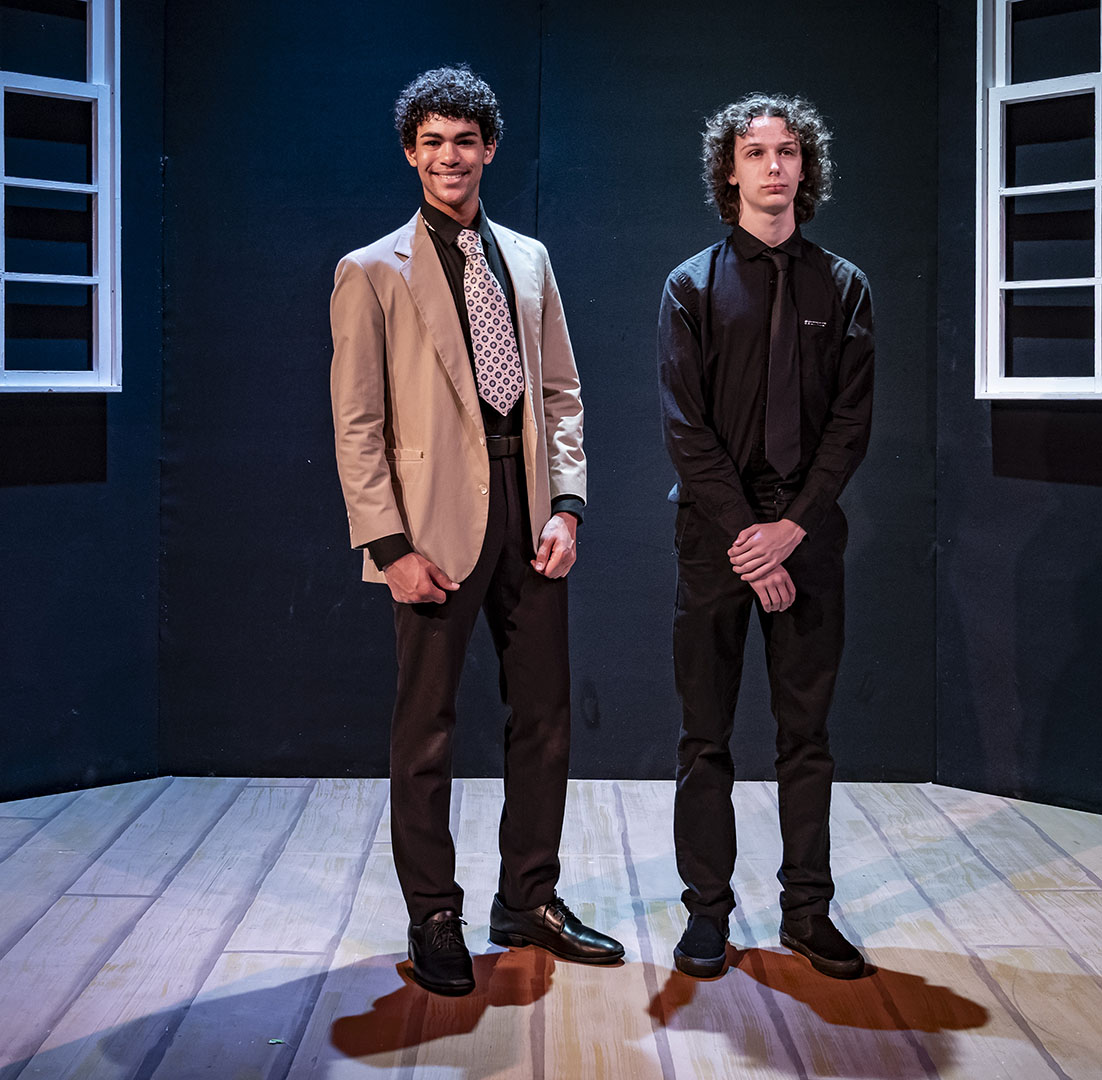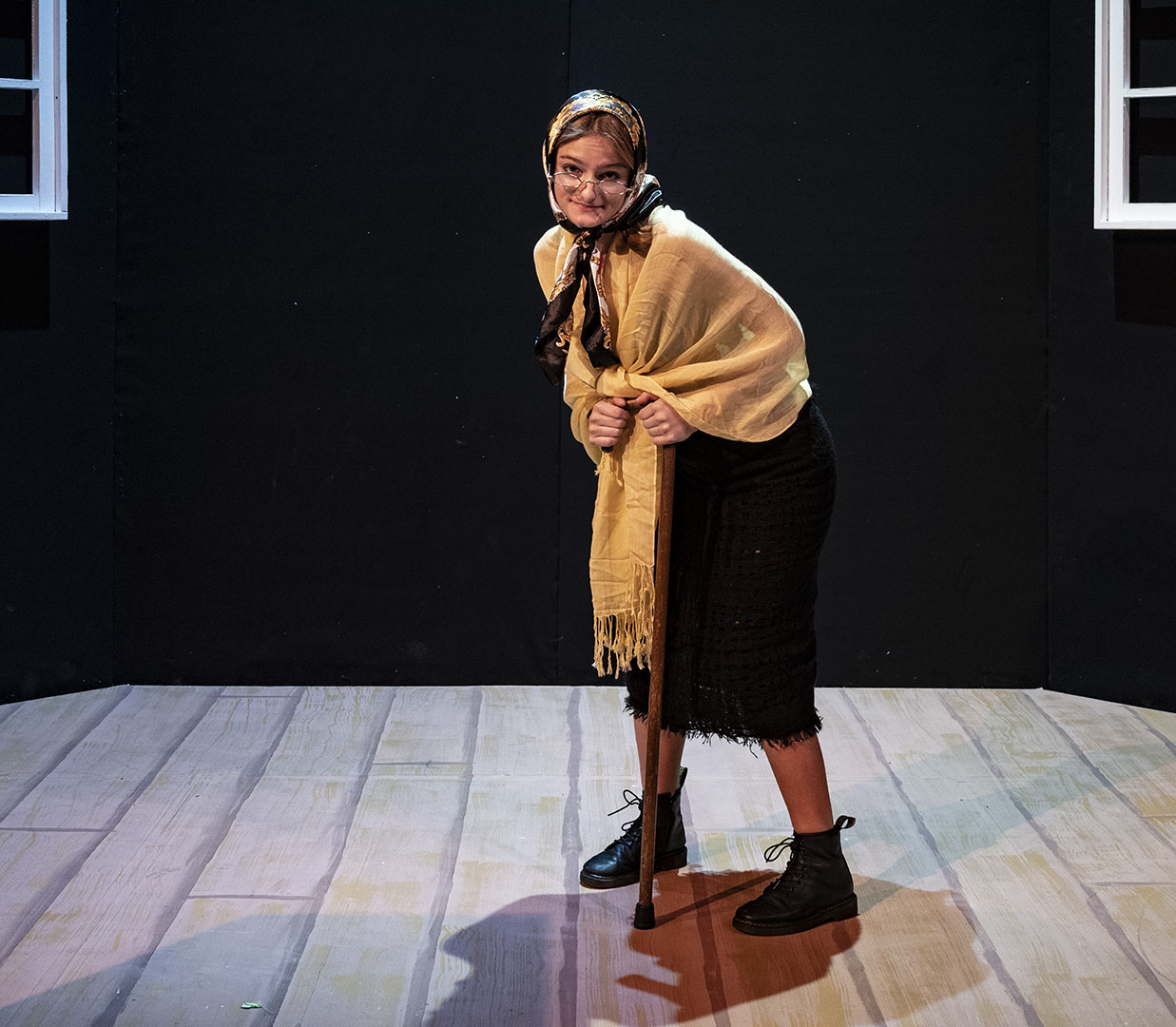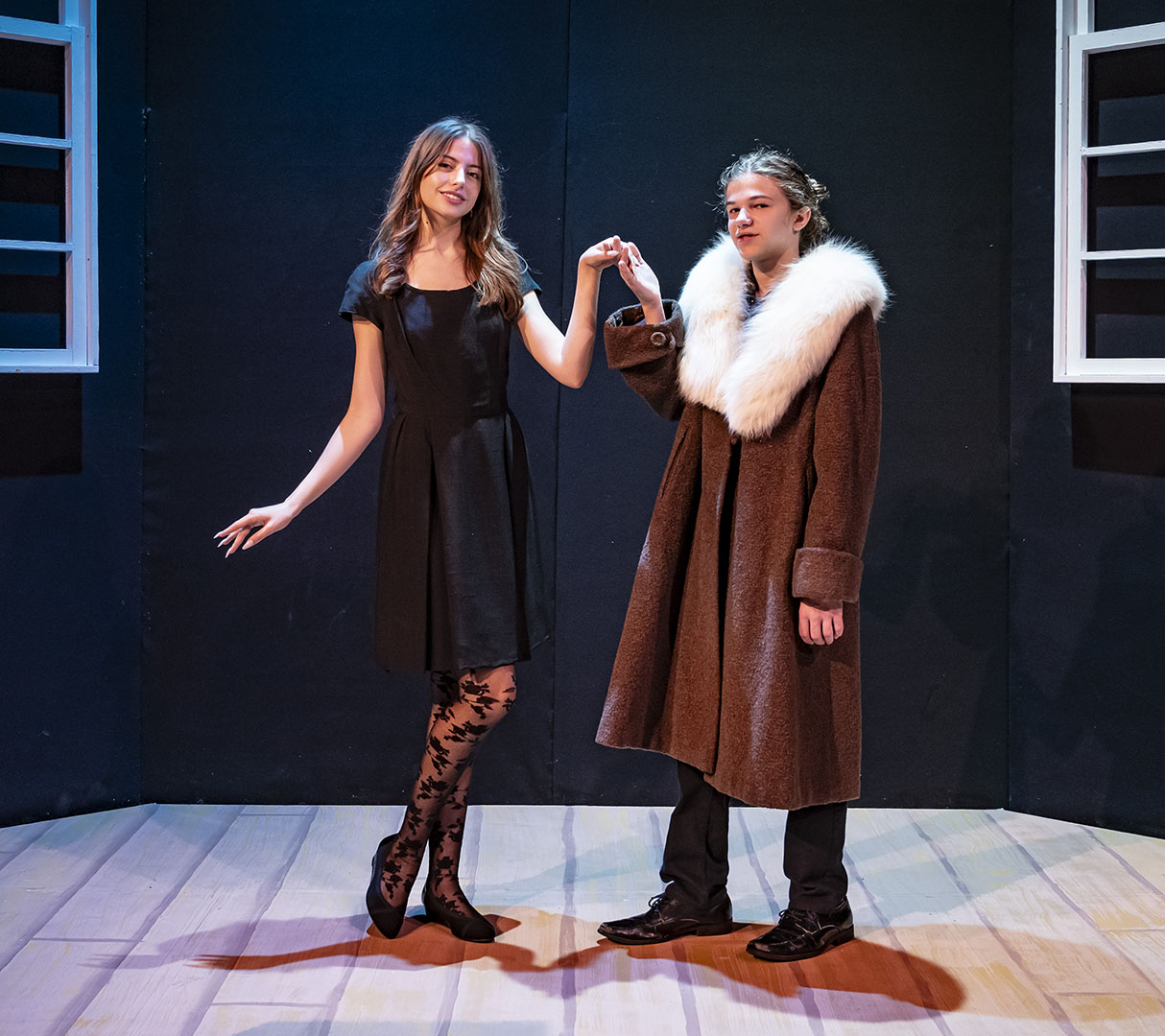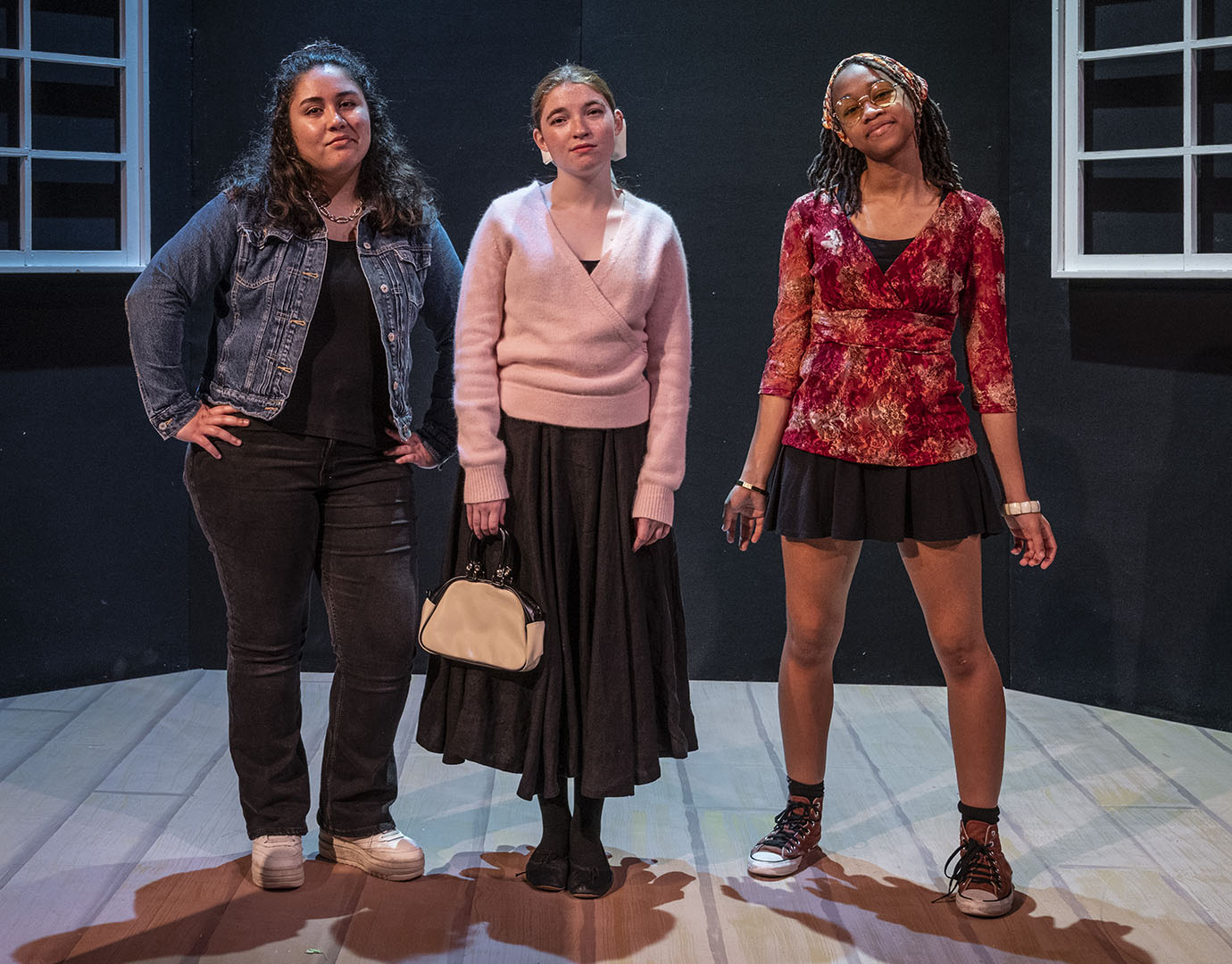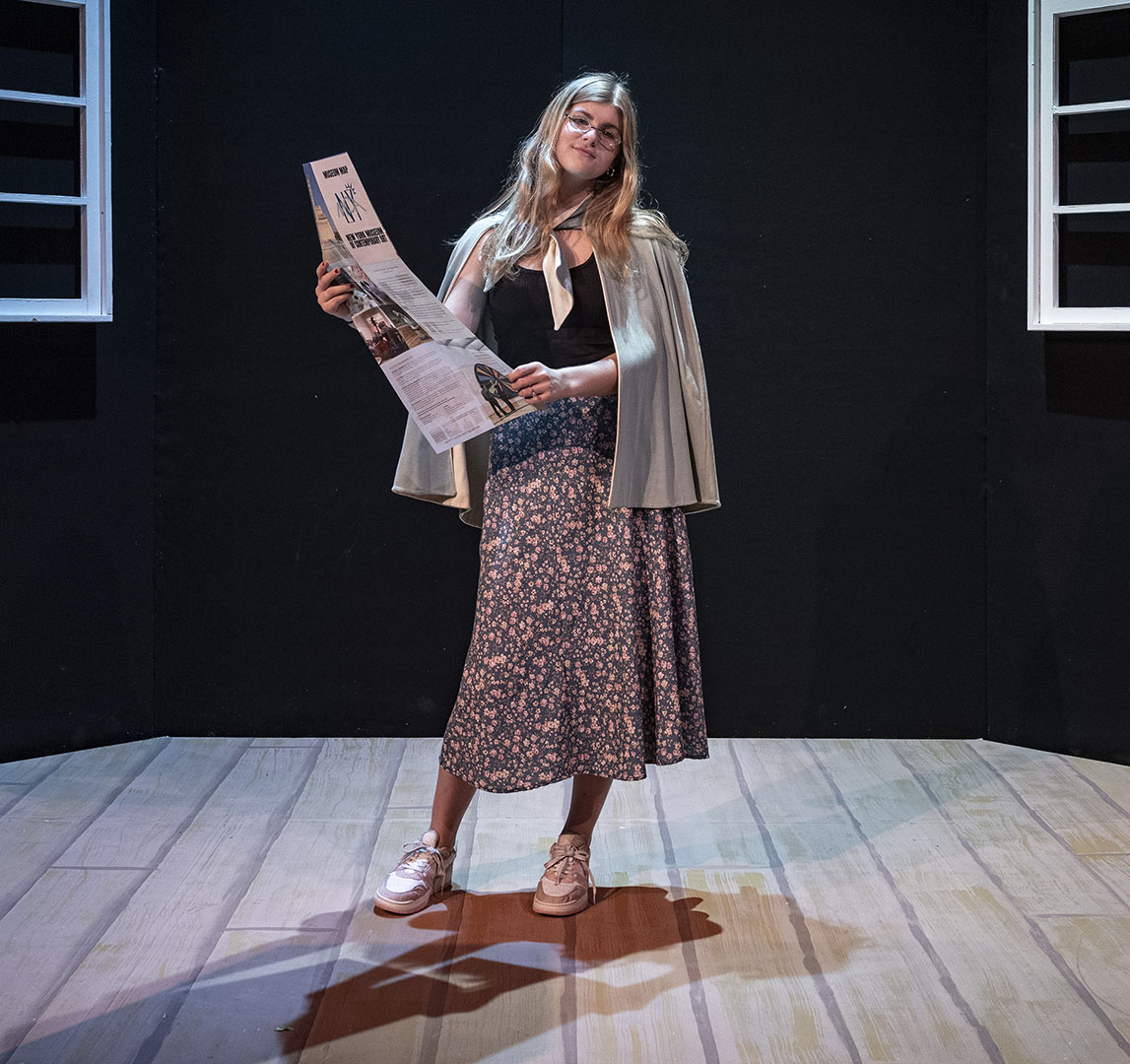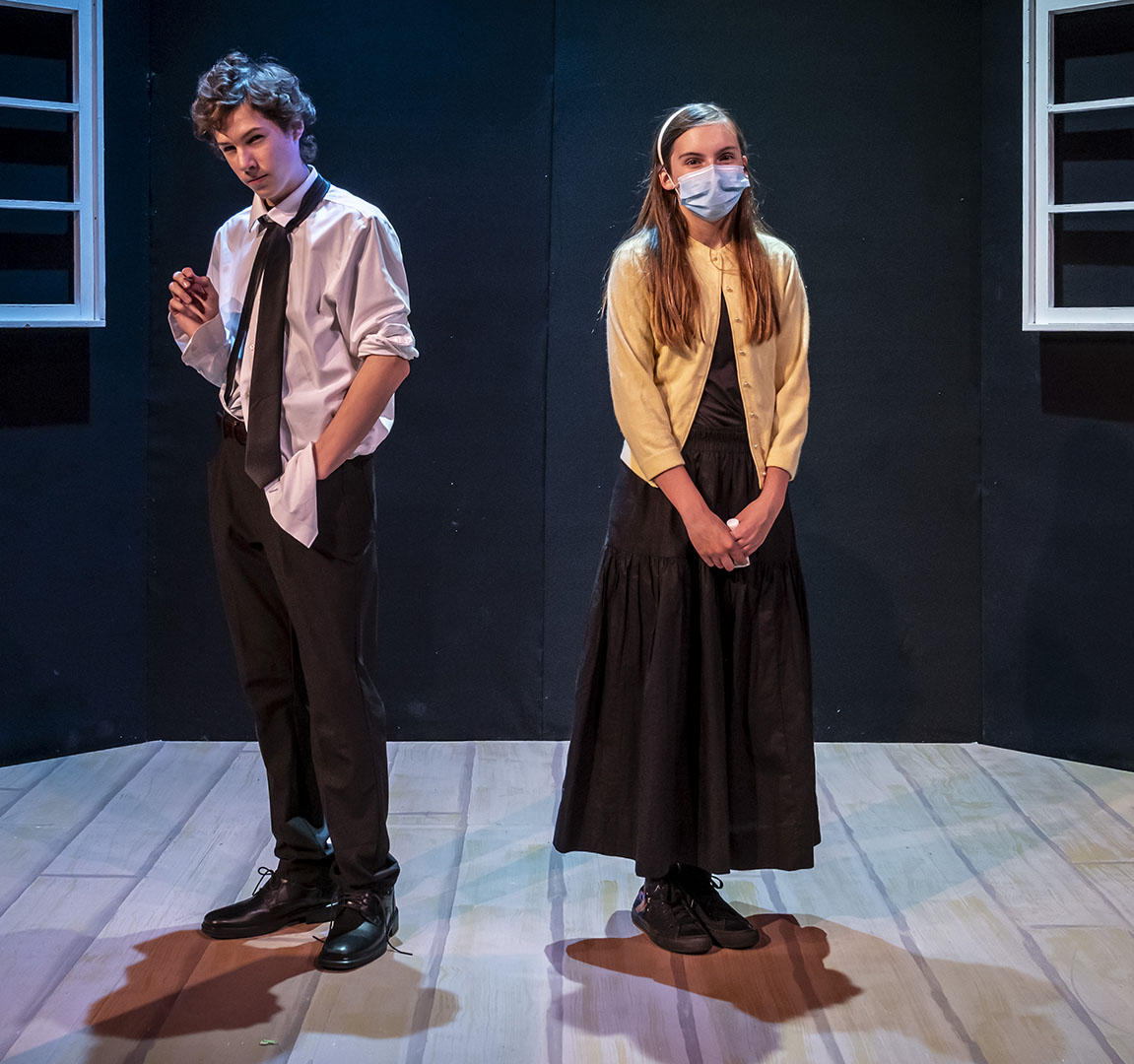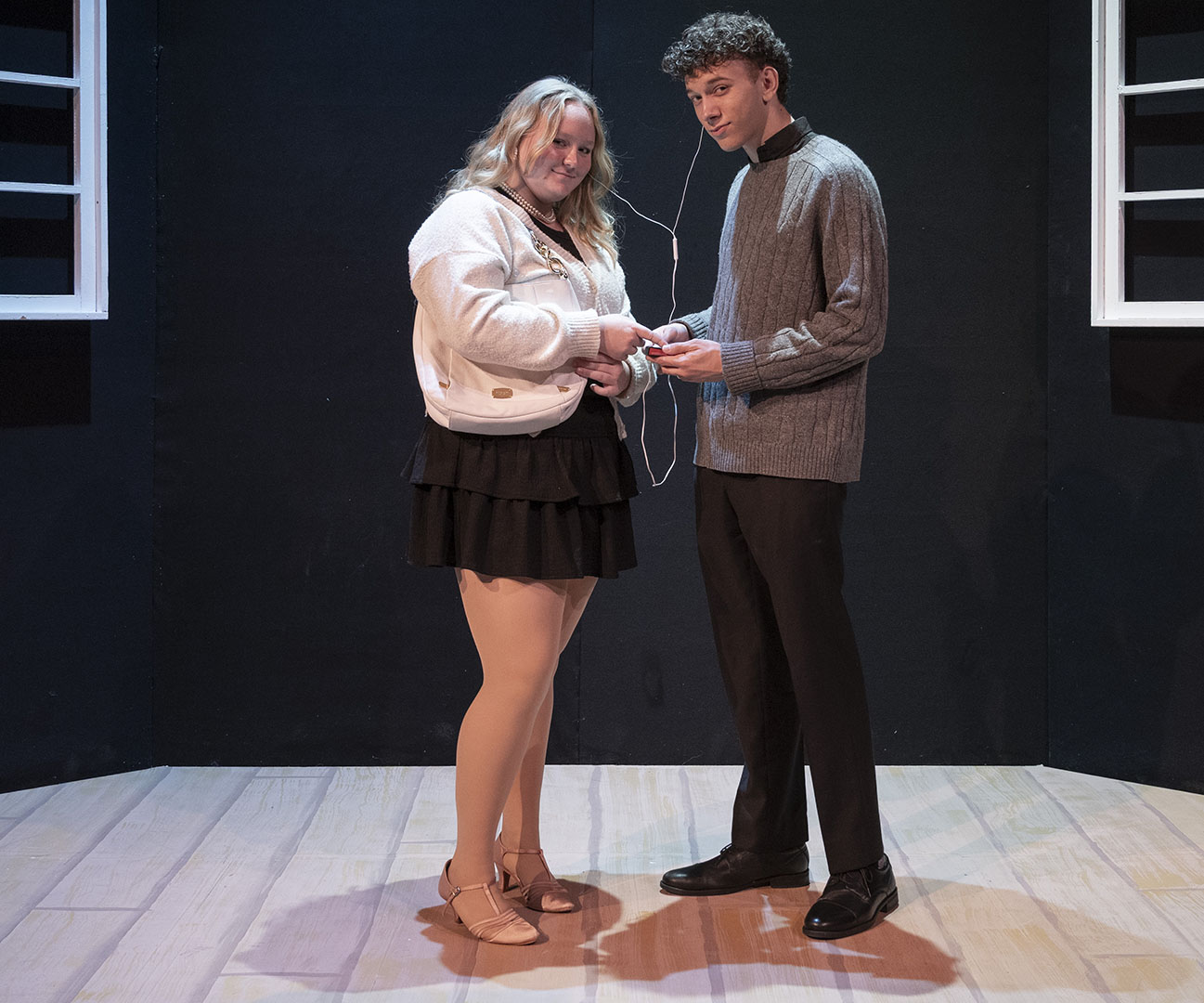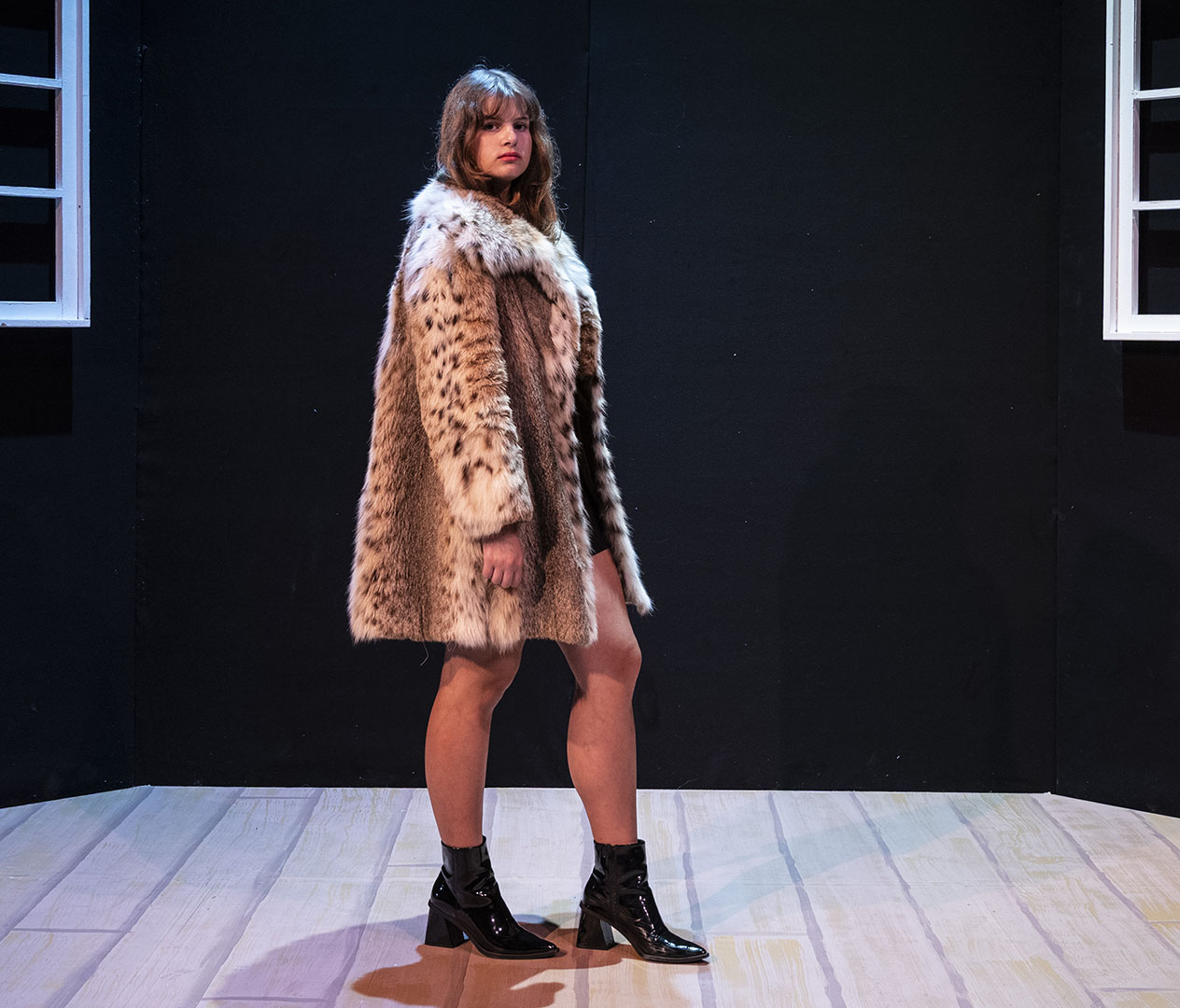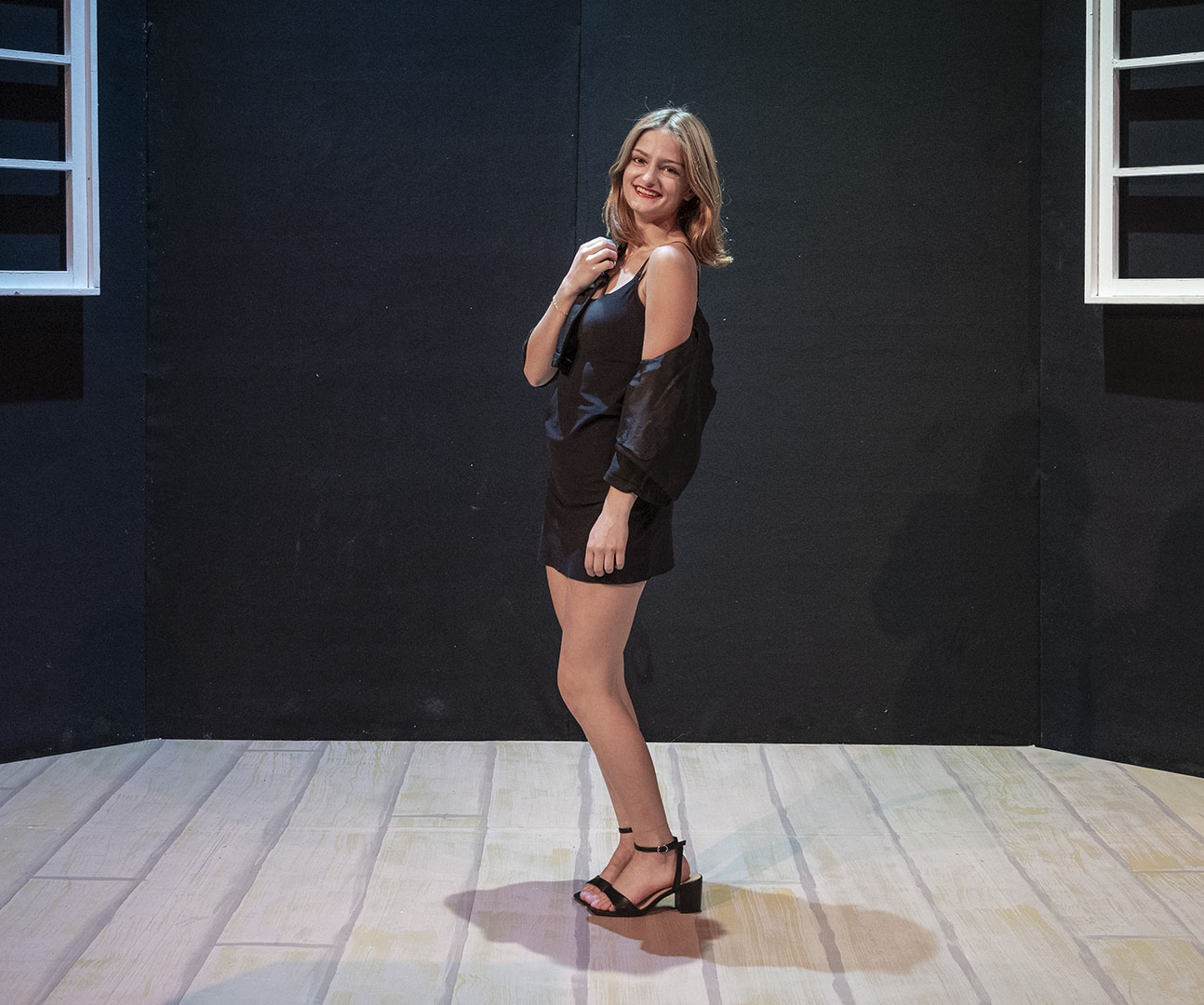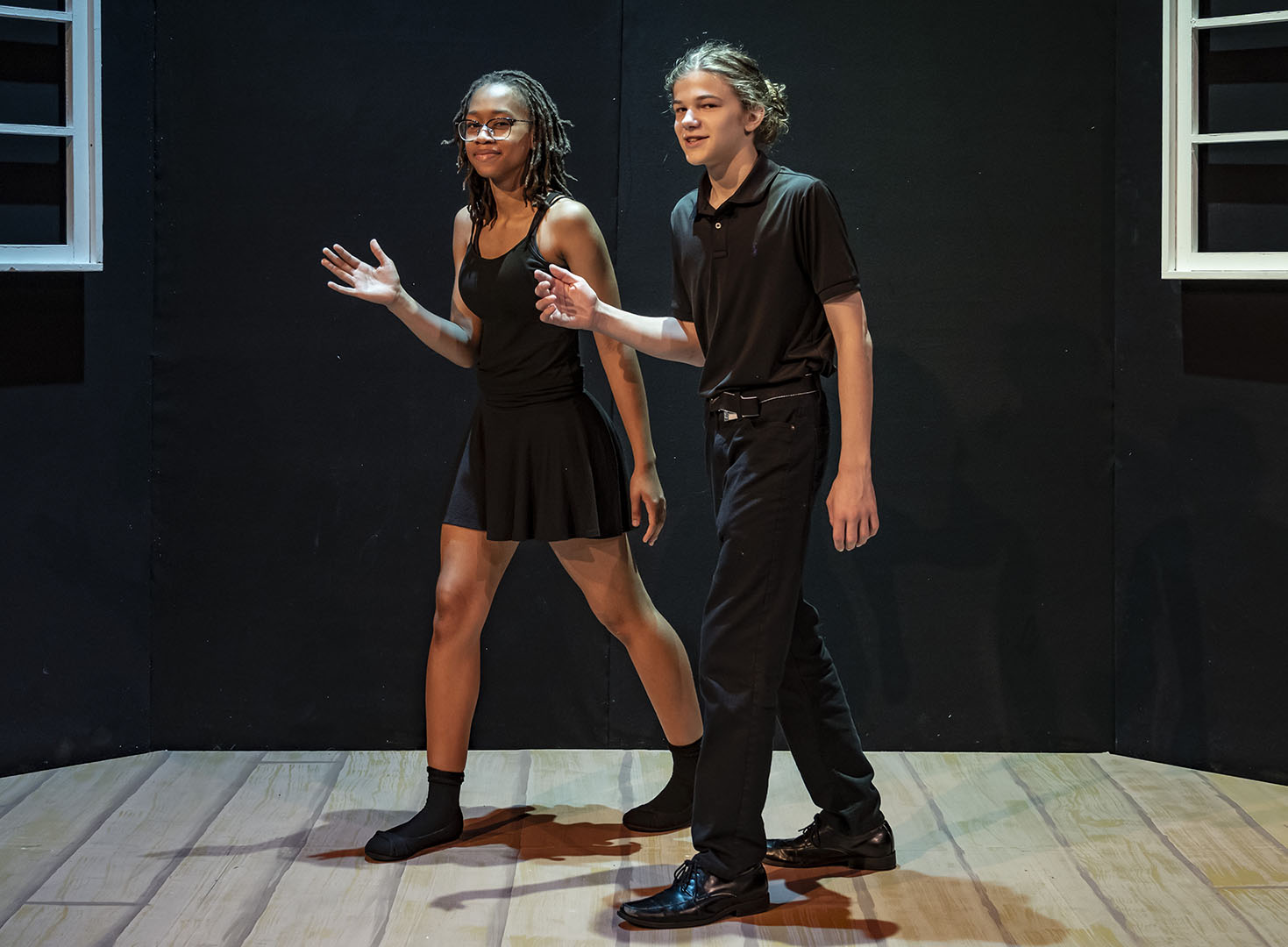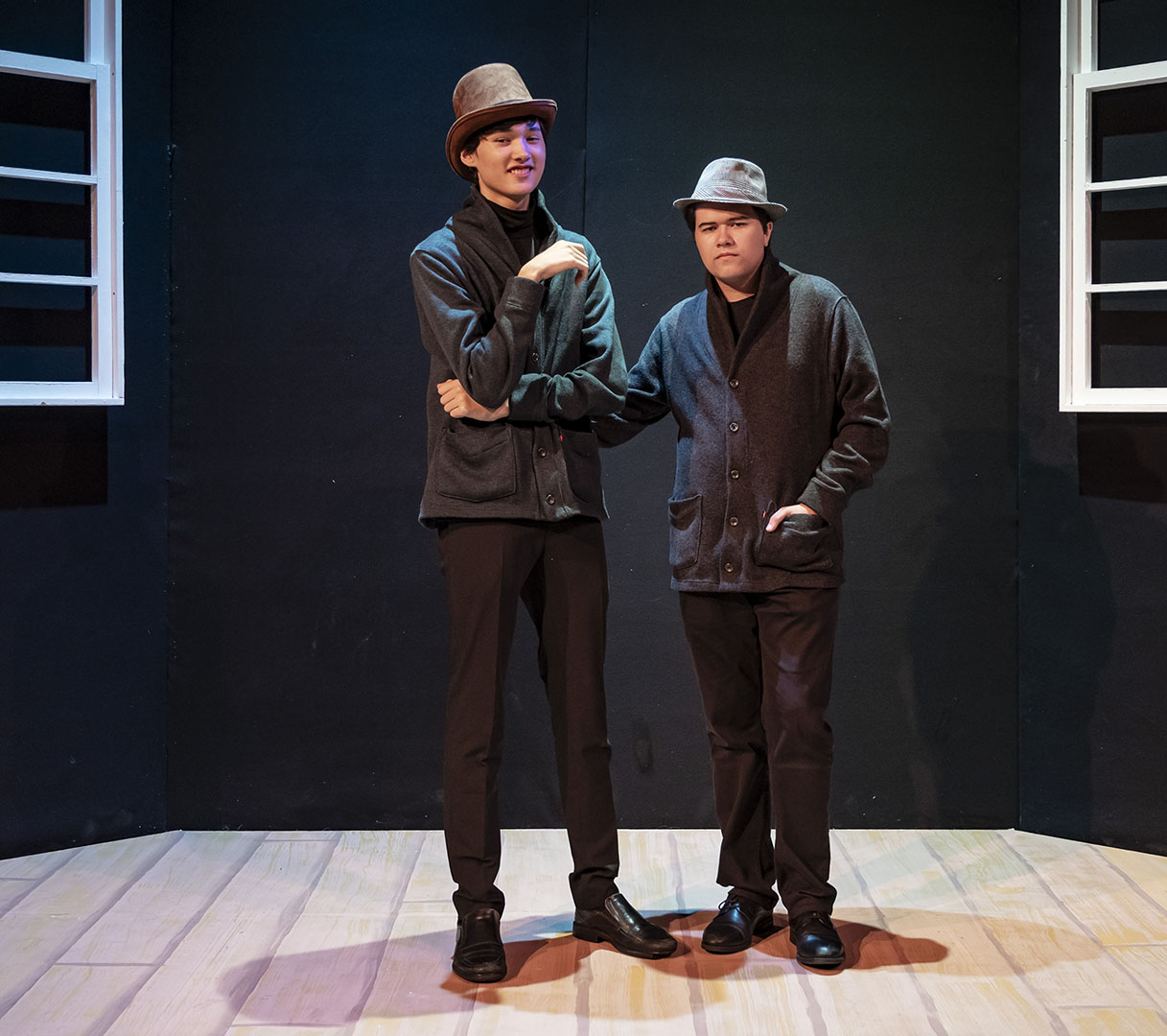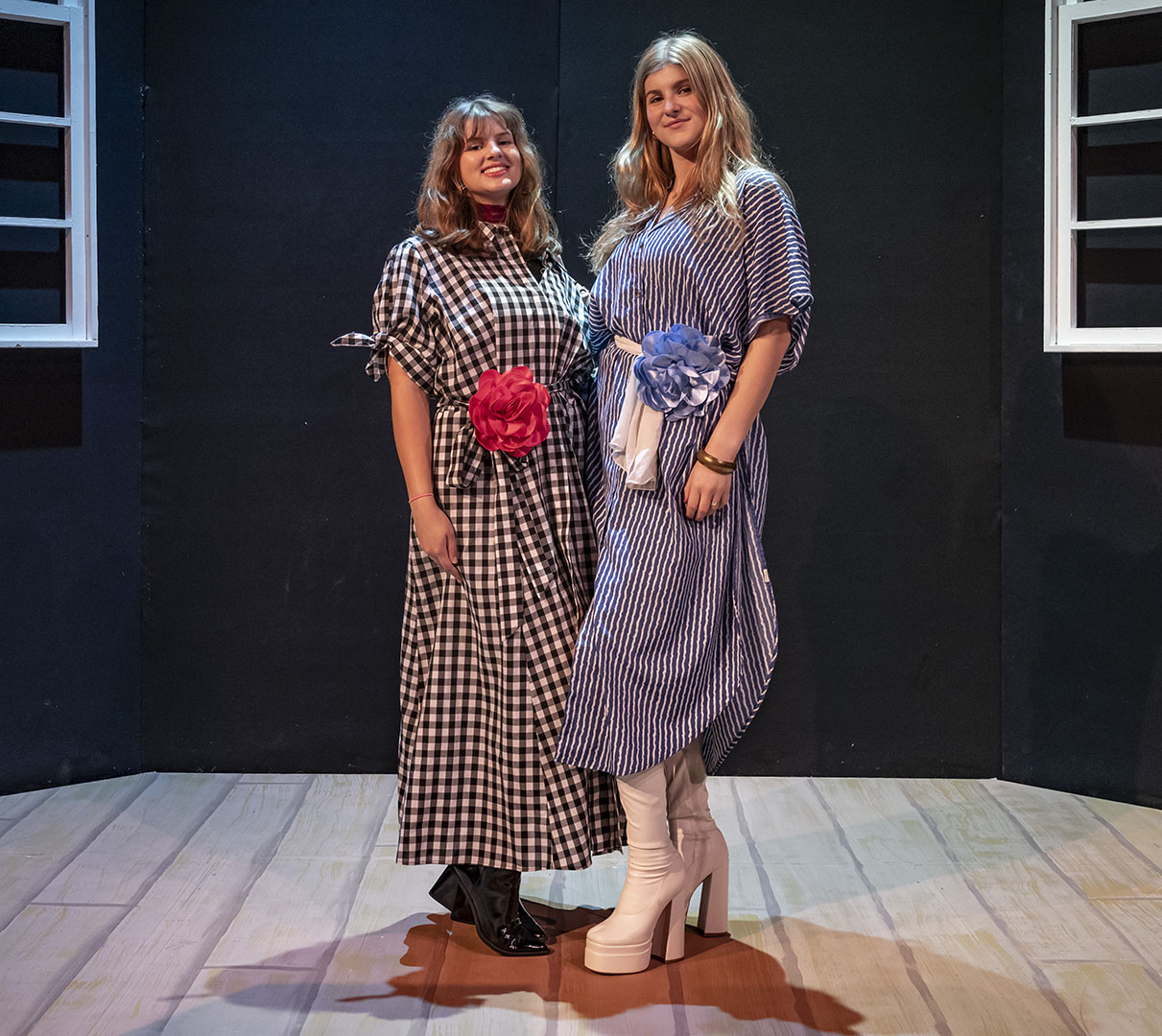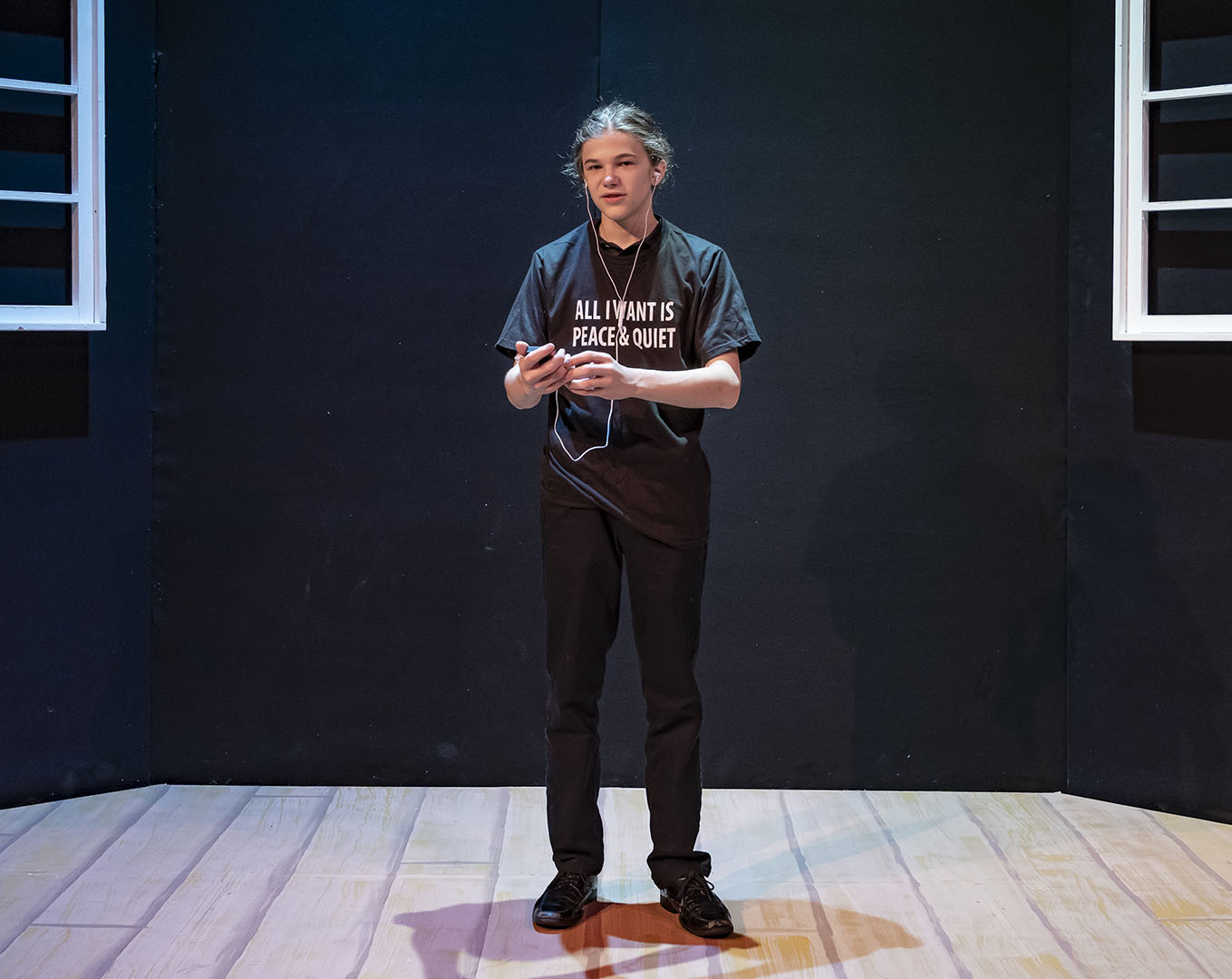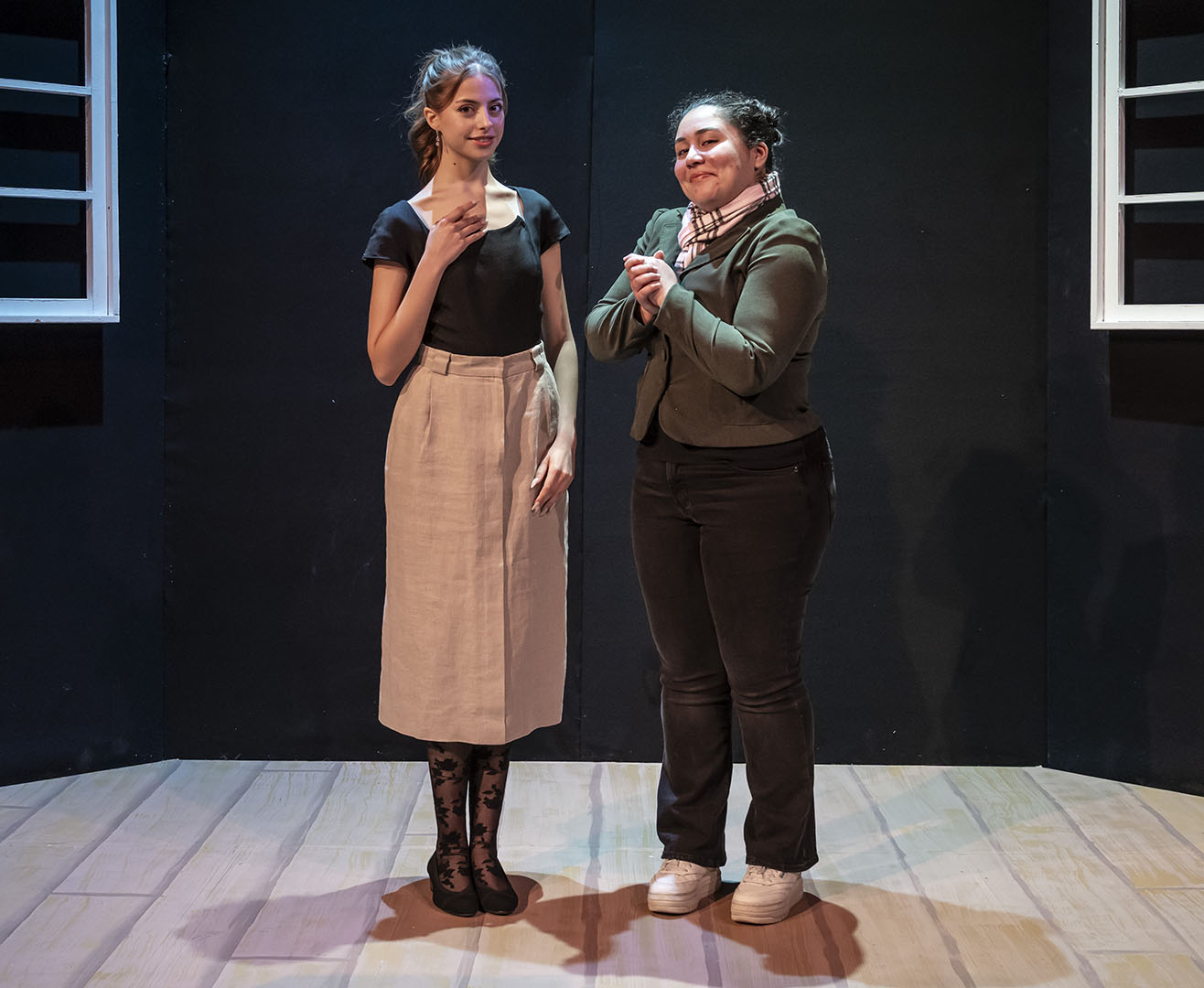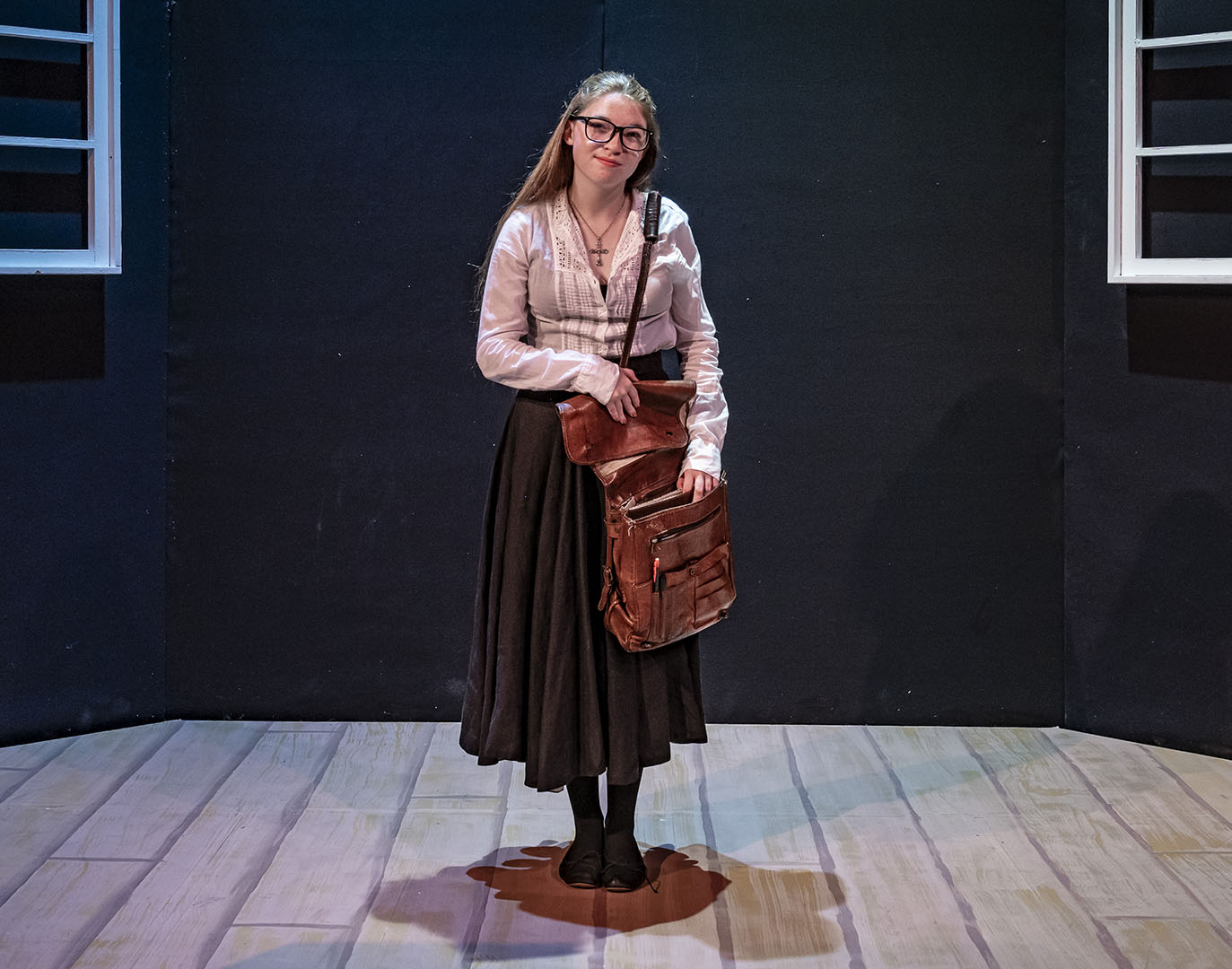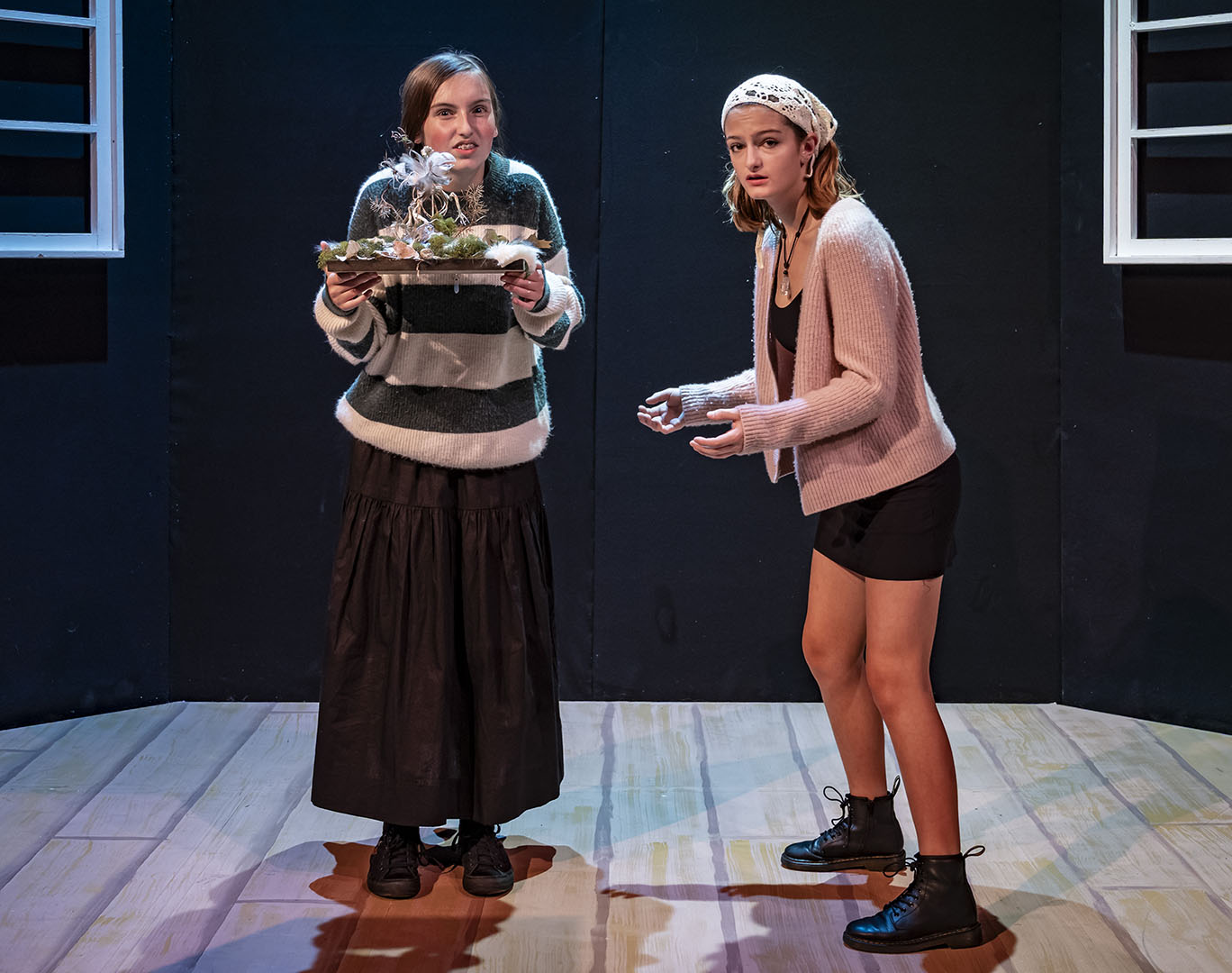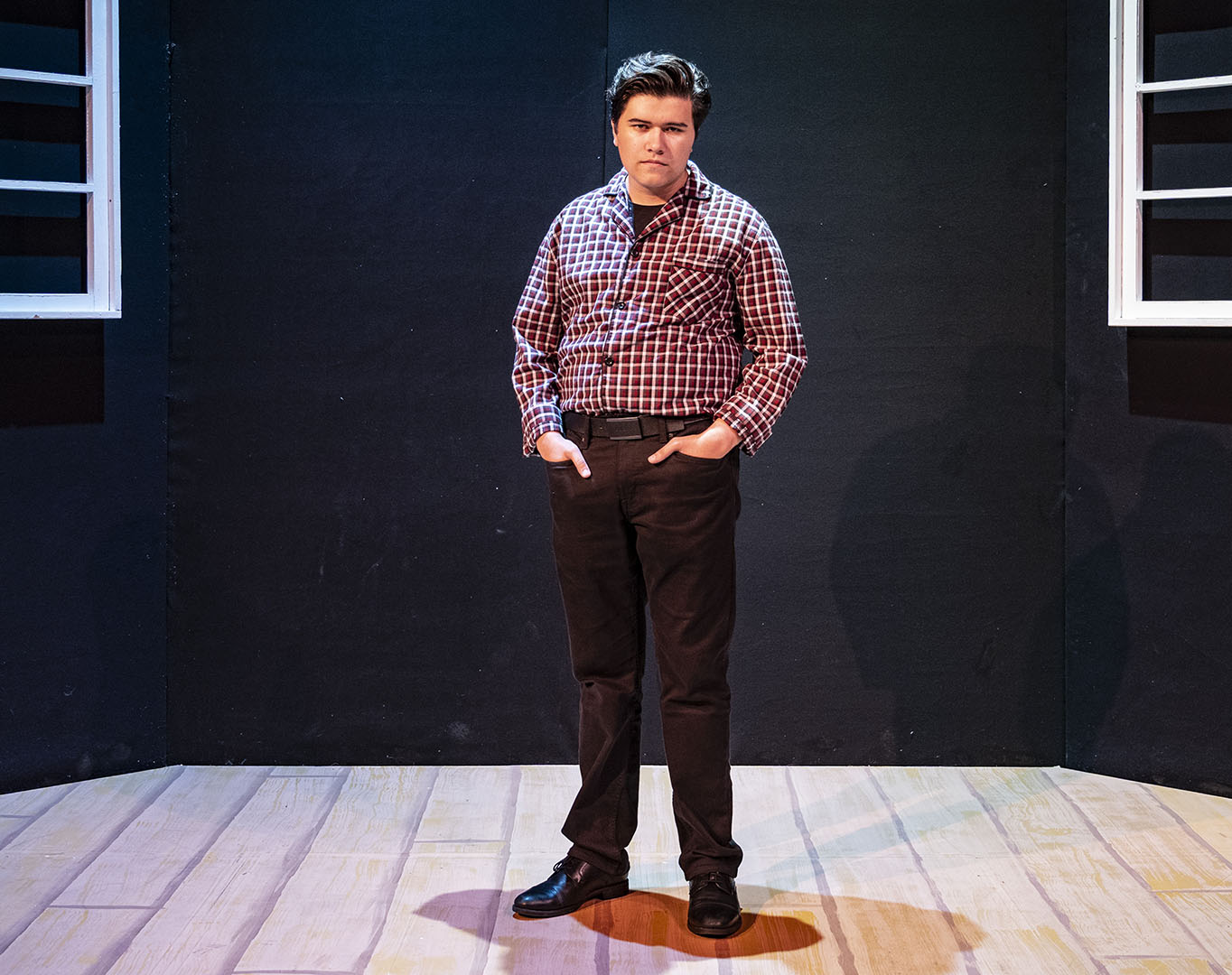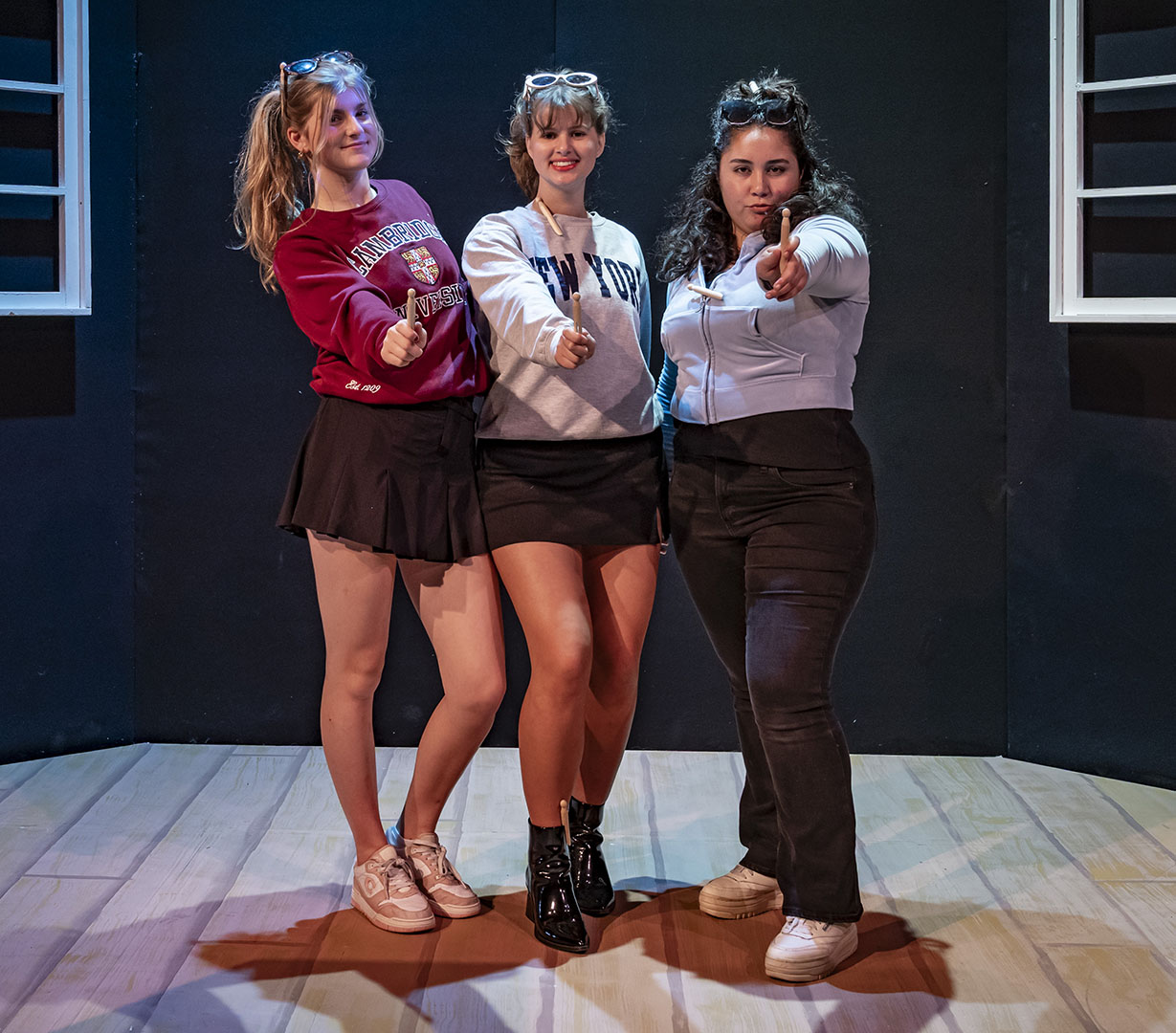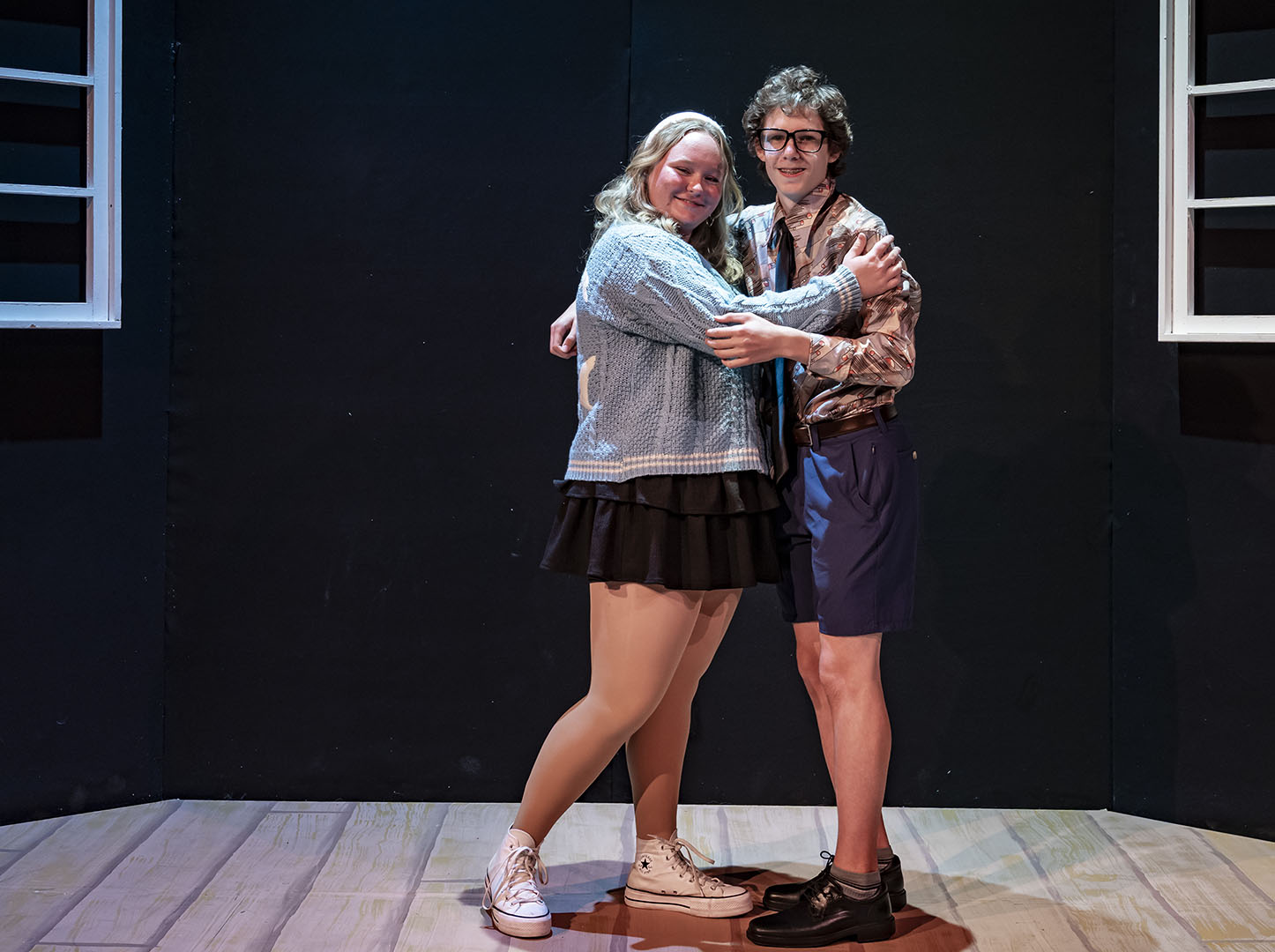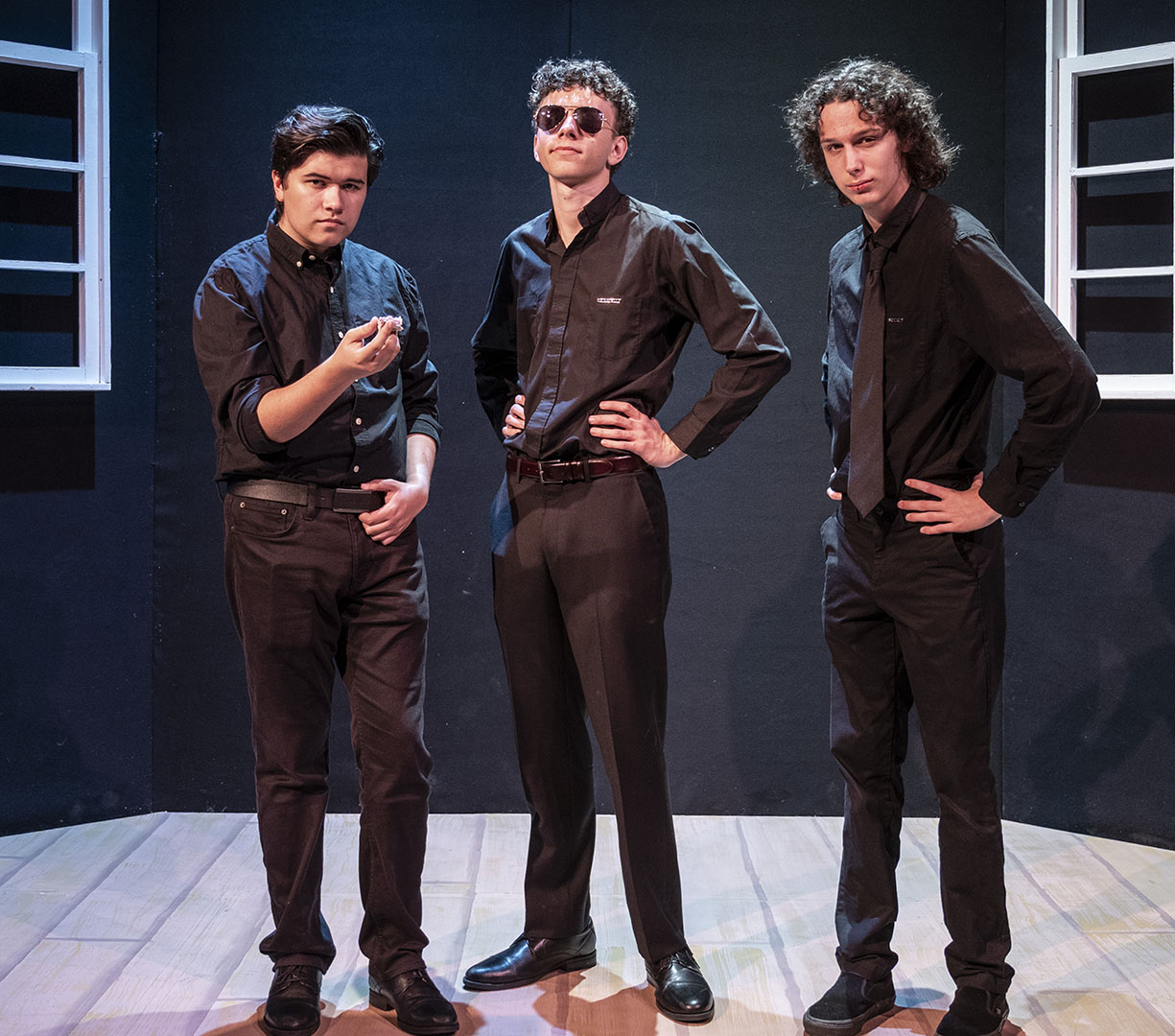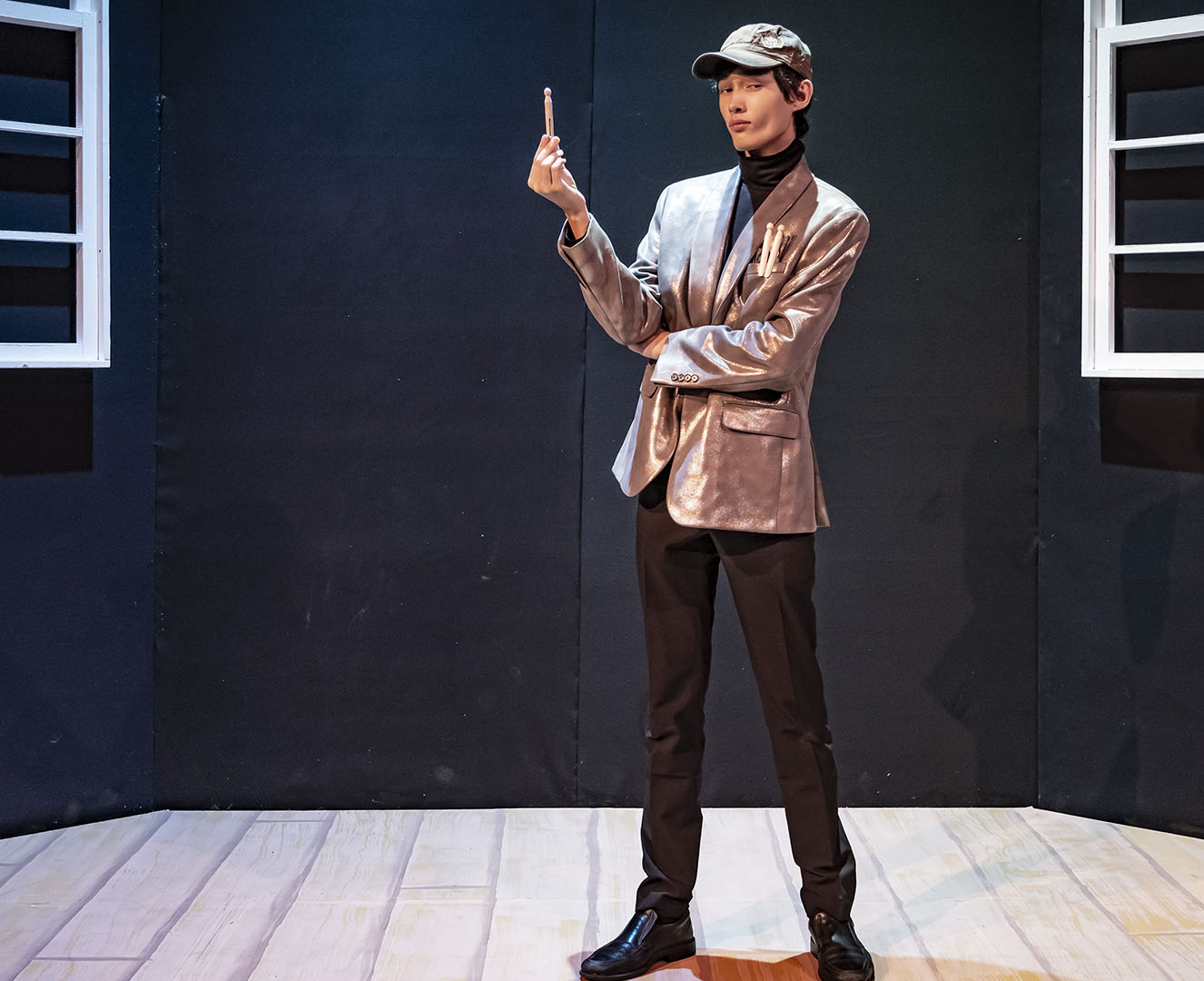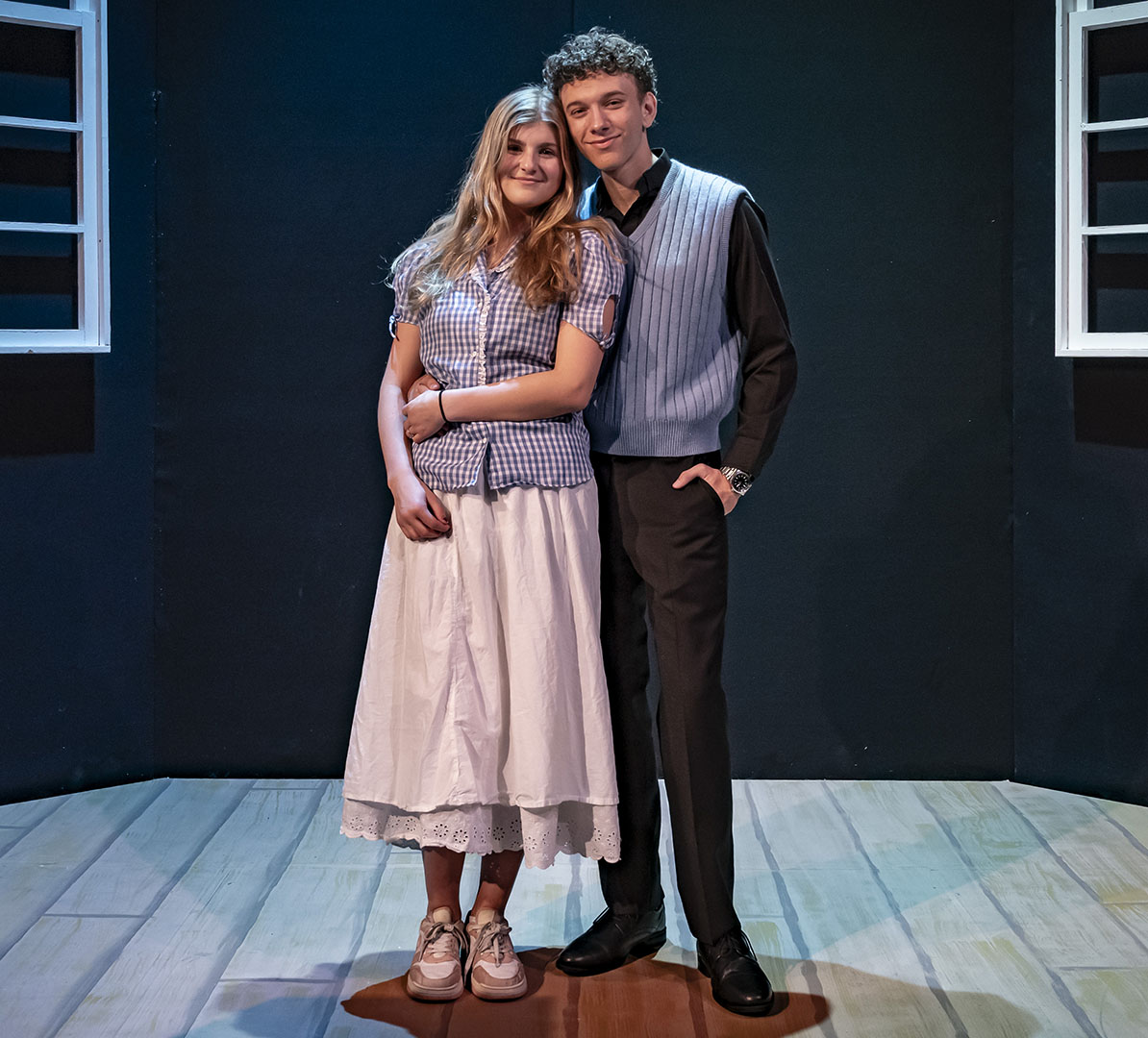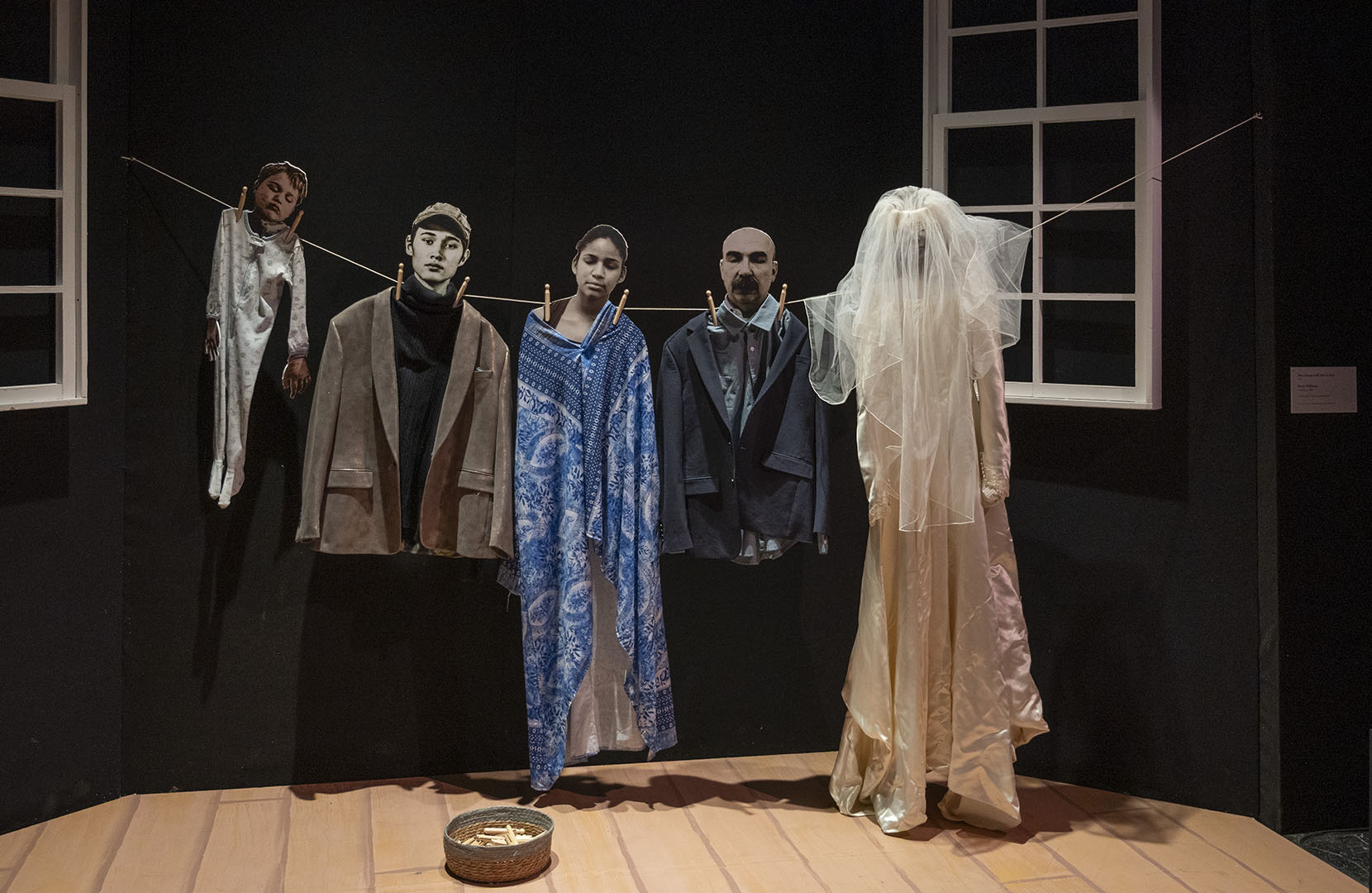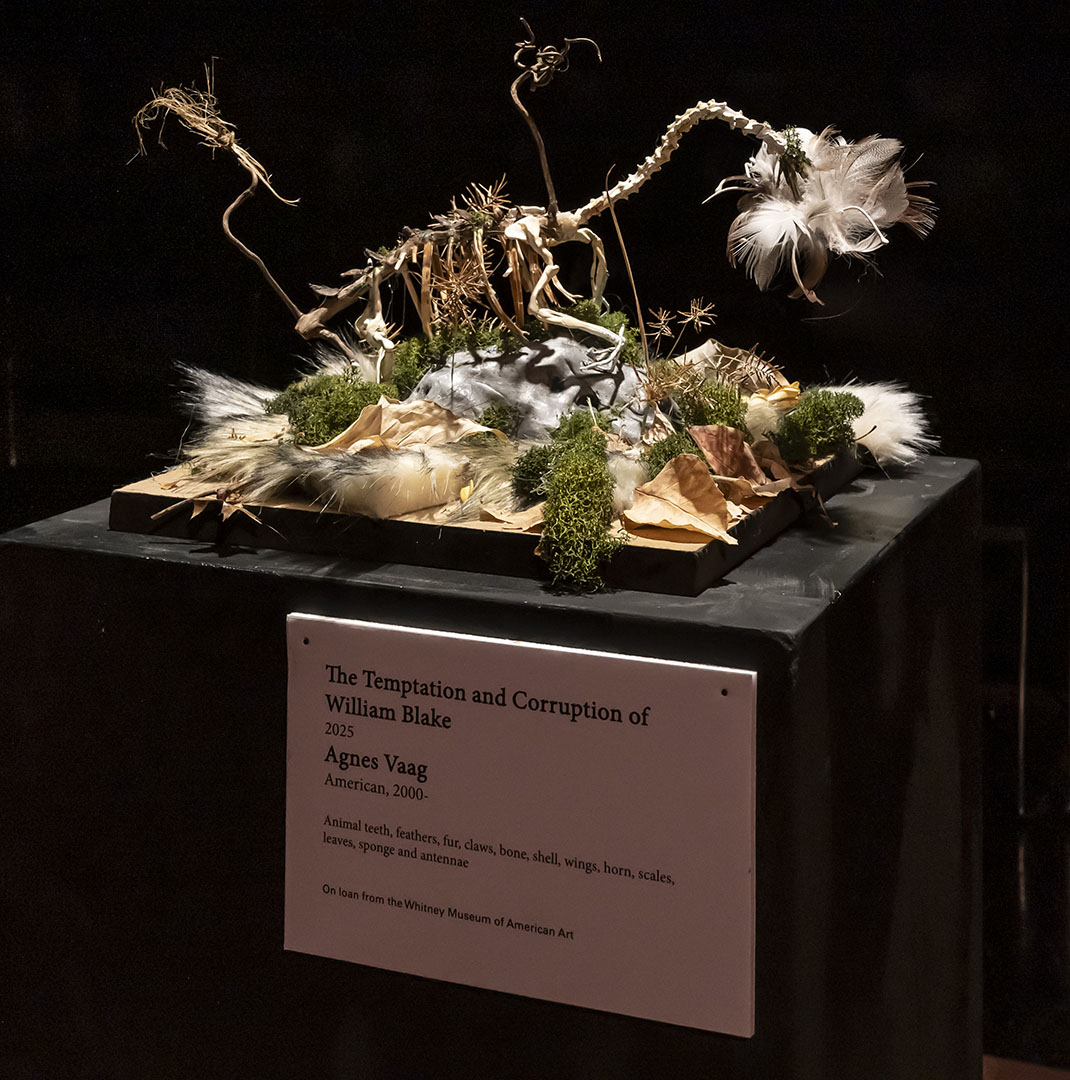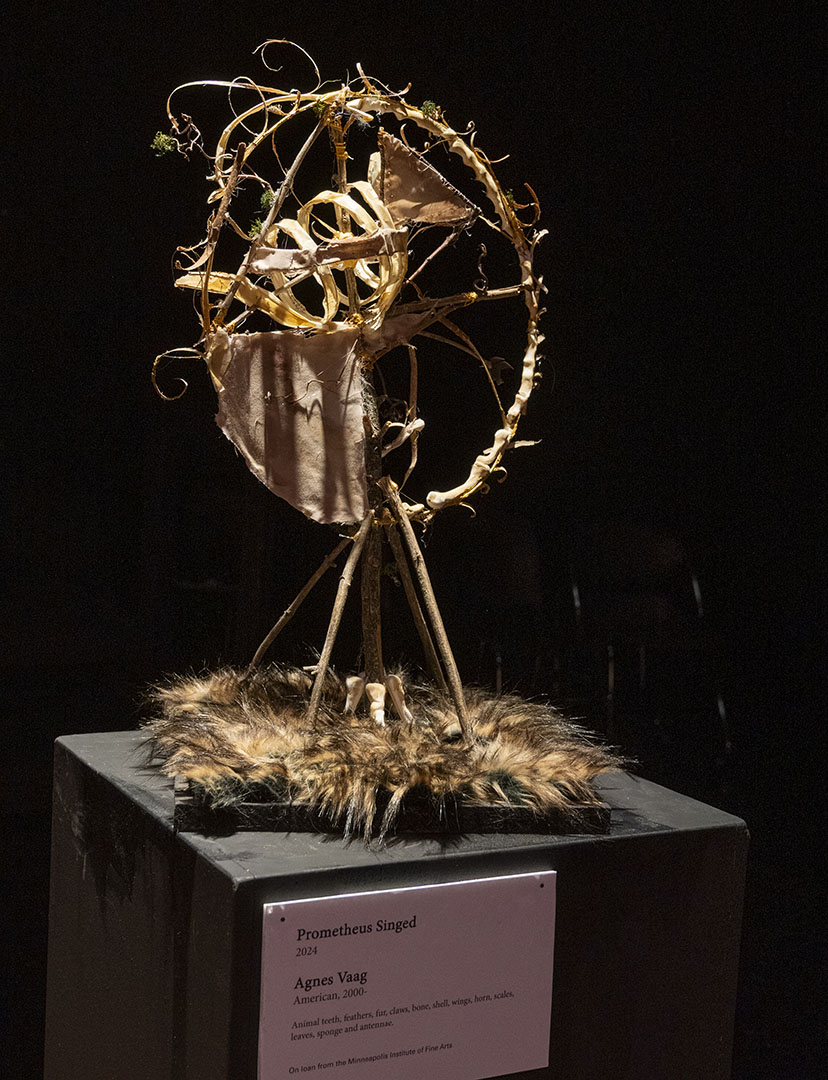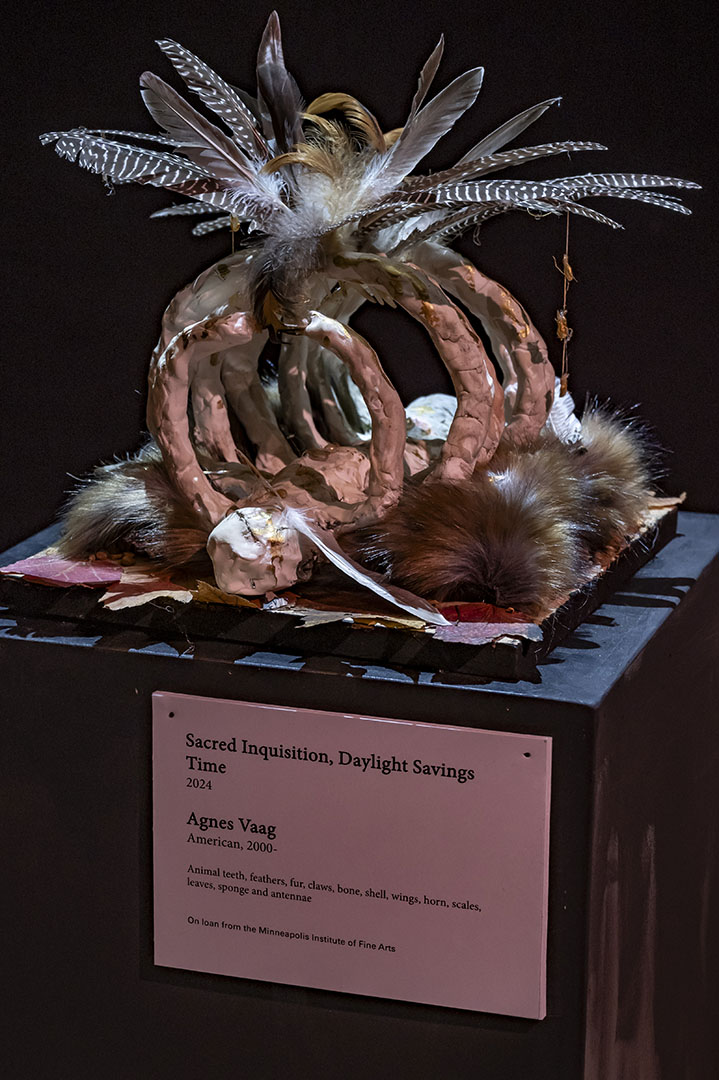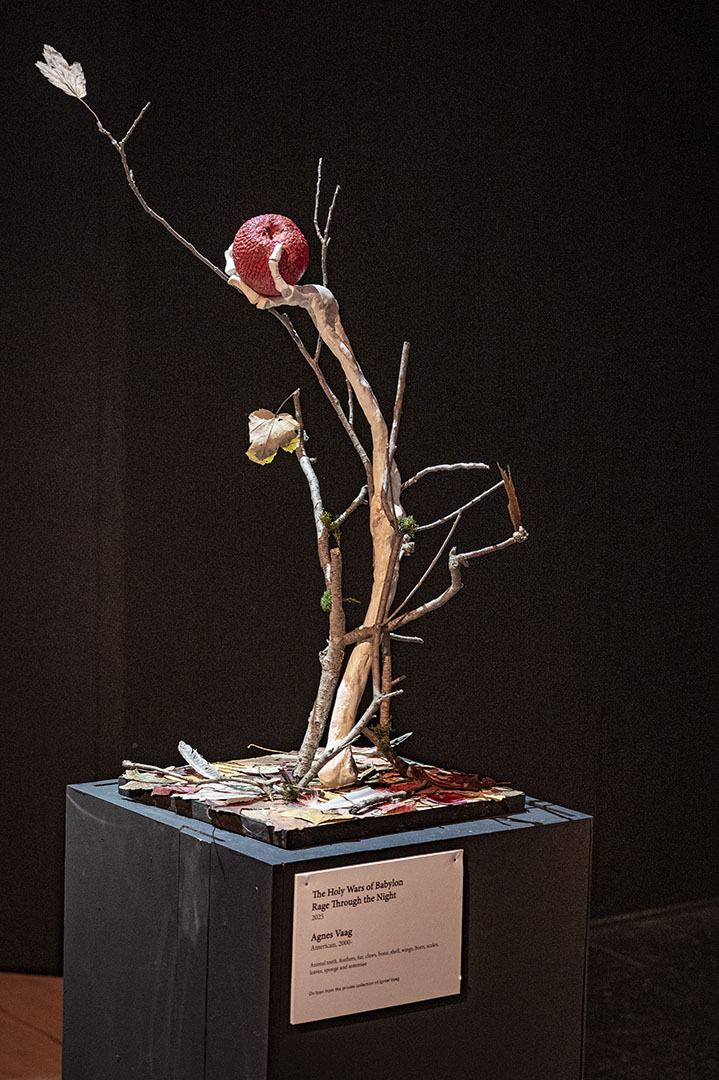This past weekend, the US Theatre Arts Program transformed the Vincent Price Black Box Theatre into a gallery of eccentric characters, sharp humor, and unexpected depth with Tina Howe’s satirical play, MUSEUM. Directed by Upper School Fine & Performing Arts Teacher Patrick Huber, the production offered audiences a clever, fast-paced exploration of how we engage with art—and each other.
About the Play
Set during the final hours of a group exhibition at the fictional Museum of Modern Art, MUSEUM introduces over 40 characters—art lovers, skeptics, tourists, students, curators, and even protestors—as they meander through the gallery space. Some come to be moved by the art, others to mock it, and a few to simply pass the time.
As the day unfolds, small interactions build into a surprisingly layered portrait of society’s relationship to art, identity, and public space. With its ensemble format and rotating characters, MUSEUM is both a celebration of human curiosity and a satire of the ways we misunderstand one another.
Why MUSEUM?
The decision to stage MUSEUM was deliberate—and a little bit daring. The play’s structure offers a unique opportunity for large ensemble work, giving many students a chance to shine. It is an absurd, quick-change format that also challenges actors to switch gears rapidly, flexing a wide range of performance muscles.
“We wanted something that was joyful, chaotic in the best way, and rooted in the live-ness of theater,” said Matt Kerns, Director of Theatre for the Upper School. “MUSEUM felt like the perfect fit. It allows students to work as a true ensemble while exploring characters that are at once hilarious and deeply human.”
Inside the Rehearsal Room
Staging a play with over 40 characters meant the actors were busy playing multiple roles, switching characters (and costumes) at a moment’s notice as the script asks. Rehearsals became a laboratory for creative risk-taking, where physicality, voice, and comedic timing were essential tools. Students explored quick character development and how to balance humor with sincerity.
Benjamin Hannah ’28 said, “I really enjoy being in MUSEUM. It was fun to be in such an unserious play, where I could play some sillier characters. As an example, I got to play the character of Giorgio. He was very fun to play because, in a couple of ways, he was almost an exaggerated version of my own personality.”
For Tommy Kastor ’28, who played one of the museum’s security guards, character development extended beyond the rehearsal room. At the suggestion of Huber, Kastor took a trip to a local art museum—not to look at the art, but to study the guards.
It was a unique kind of research assignment that reflected the show’s emphasis on observational detail and human behavior.
Laila Holmes ’28 added, “The first thing that came to mind when I saw Julie’s lines was, ‘This girl is definitely Sharpay Evans, a character from High School Musical. I imagined a total daddy’s girl, but at the same time, I imagined her being a stronger, confident, and professional woman. So, I created a character that was a mix of Elle Woods from Legally Blonde with Sharpay Evans, without all the pink, because you can be strong and show your feminine side without relying on the color pink.”
What Students Took Away
Mr. Huber has three hopes for the young artists who created the production:
“I hope they learned to trust one another. There is no tighter team than a well-tuned group of actors and technicians telling a story in the theater. I hope they all appreciate the time they spent working with people who gave them the freedom to throw themselves into the story, knowing that there was a group there to catch them and build on their choices.”
Further, “I hope they learned to look at the people around them from an honest but loving place. Tina Howe, the playwright, skewers her characters with the precision of Hogarth or Hockney, but she also finds their heart, and offers all of her characters redemption. We all need to be better at offering each other that kind of redemption.”
Finally, “I hope they’ve gotten hooked on theater. It’s hard to be a part of something like MUSEUM and not find a place in your life for live theater. Whether it’s as an artist or an audience member, I hope they realize what sweet sorrow and profound joy await them in a darkened room.”
Beyond the technical demands, MUSEUM sparked meaningful discussions among the cast about the role of art in public life. Others appreciated the ensemble nature of the piece, noting how it encouraged a spirit of collaboration rather than competition.
Capturing the Chaos and Beauty
Huber not only served as director; he was also the cast photographer. He documented the production with stunning visuals that capture the colorful, kinetic spirit of the piece. With oversized sculptures, rotating disco balls, and characters in bold costumes darting across the space, the set itself became part of the story—a living museum where nothing stayed still for long.
A Show That Leaves You Looking
In the end, MUSEUM did what the best theater does: it made audiences laugh, think, and notice. It asked them to consider how they move through public spaces, how they judge what’s “good” or “bad” art, and what it means to truly look at something—or someone.
Click here to see the program from the show!
